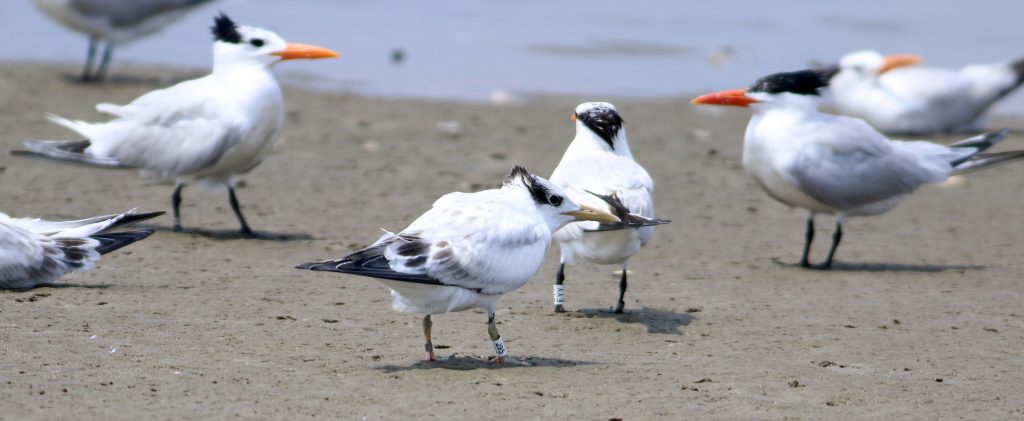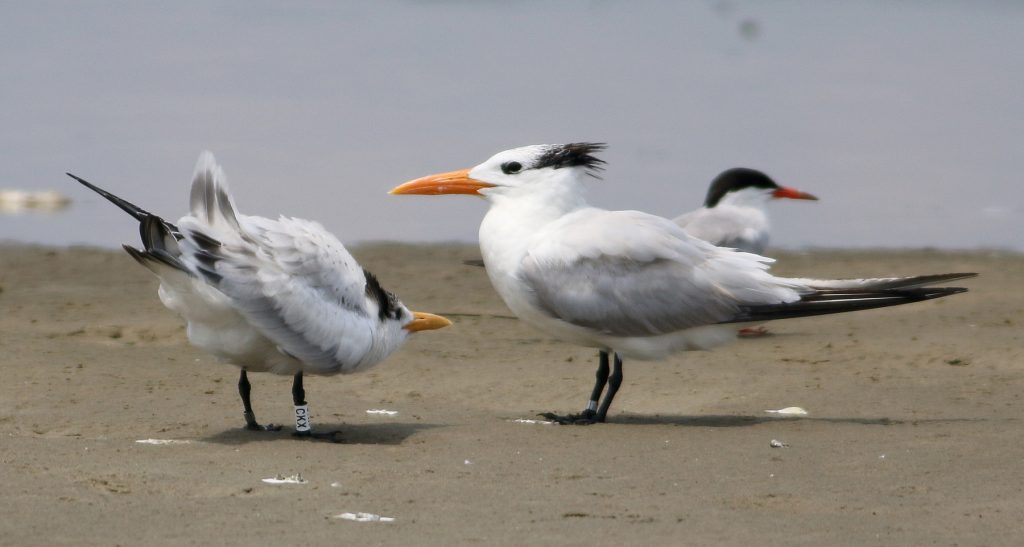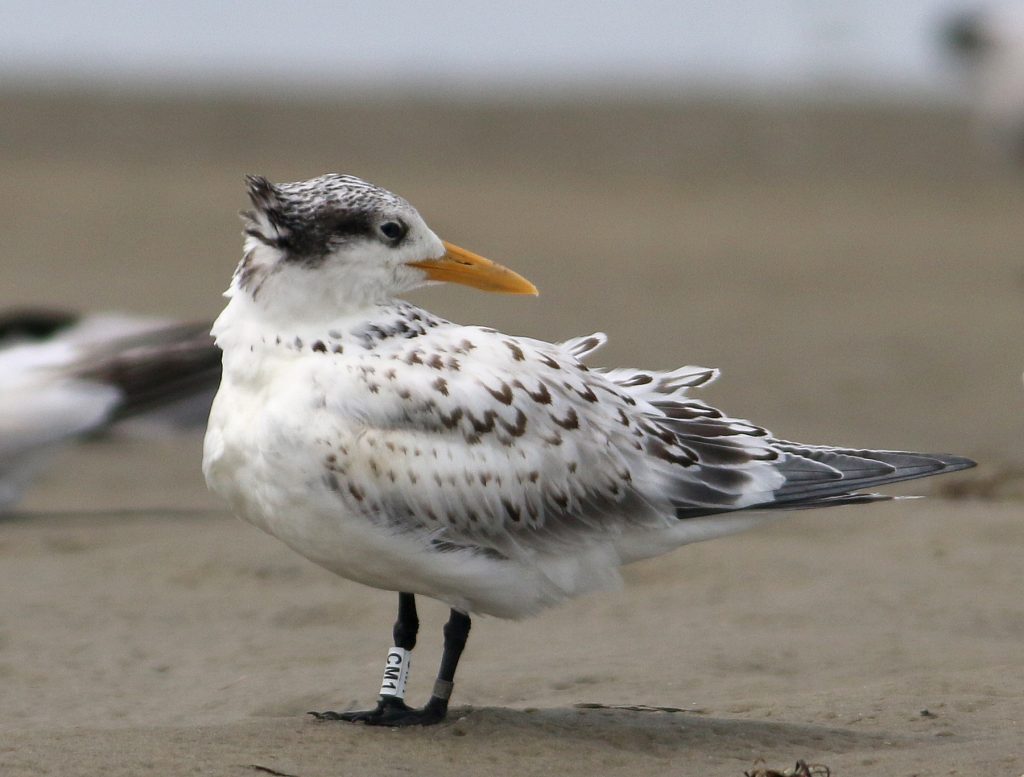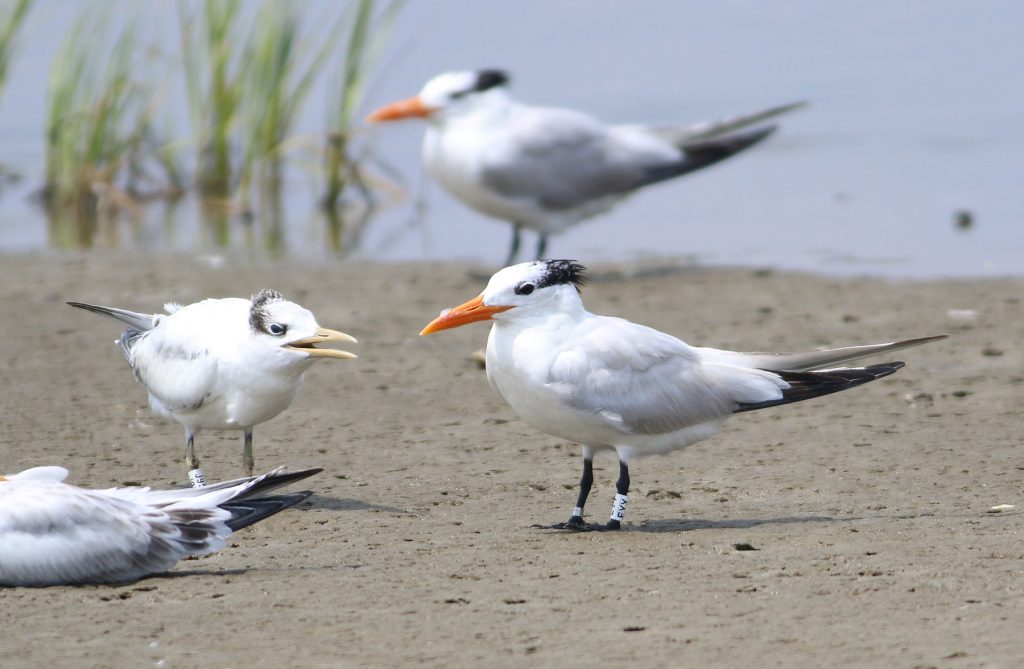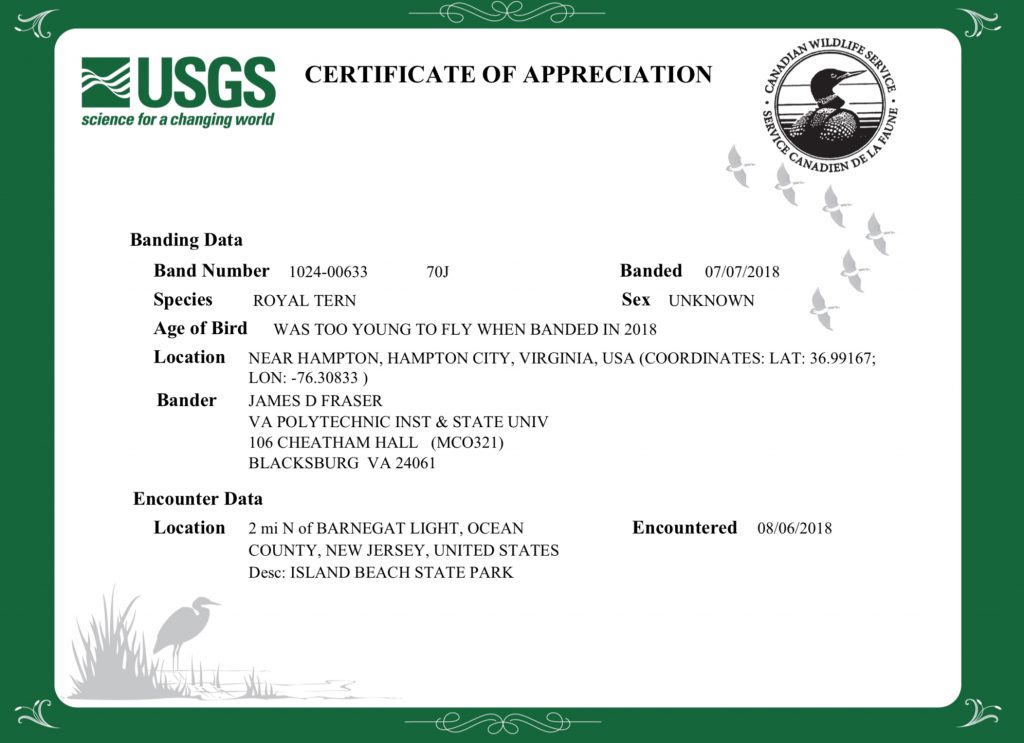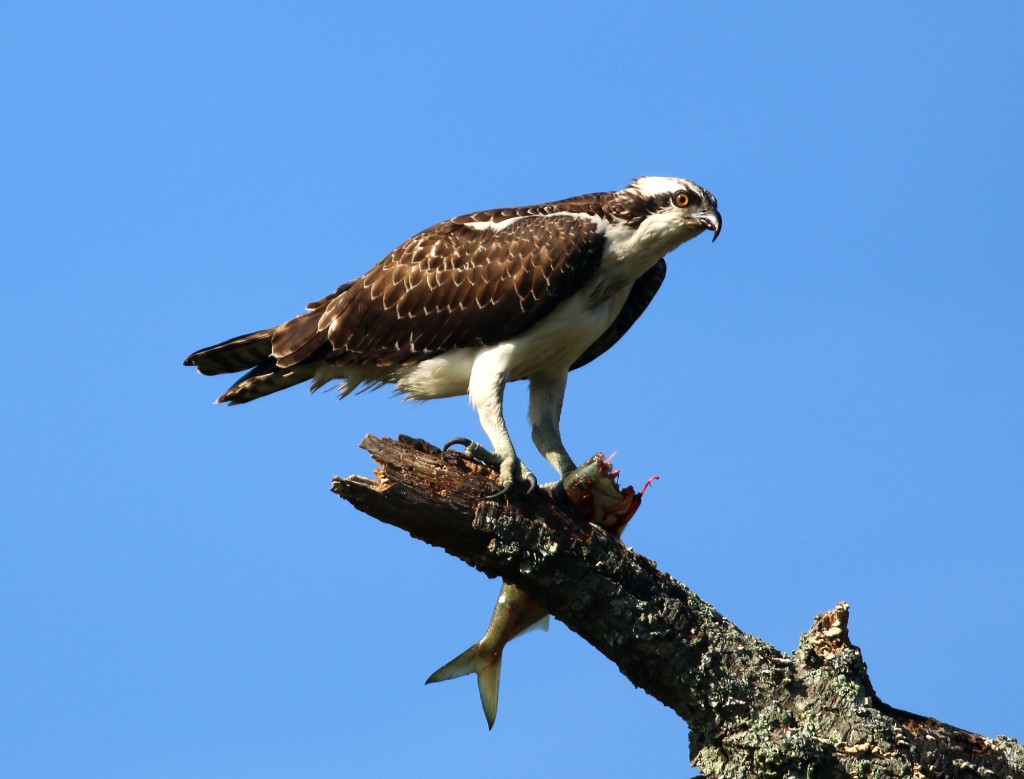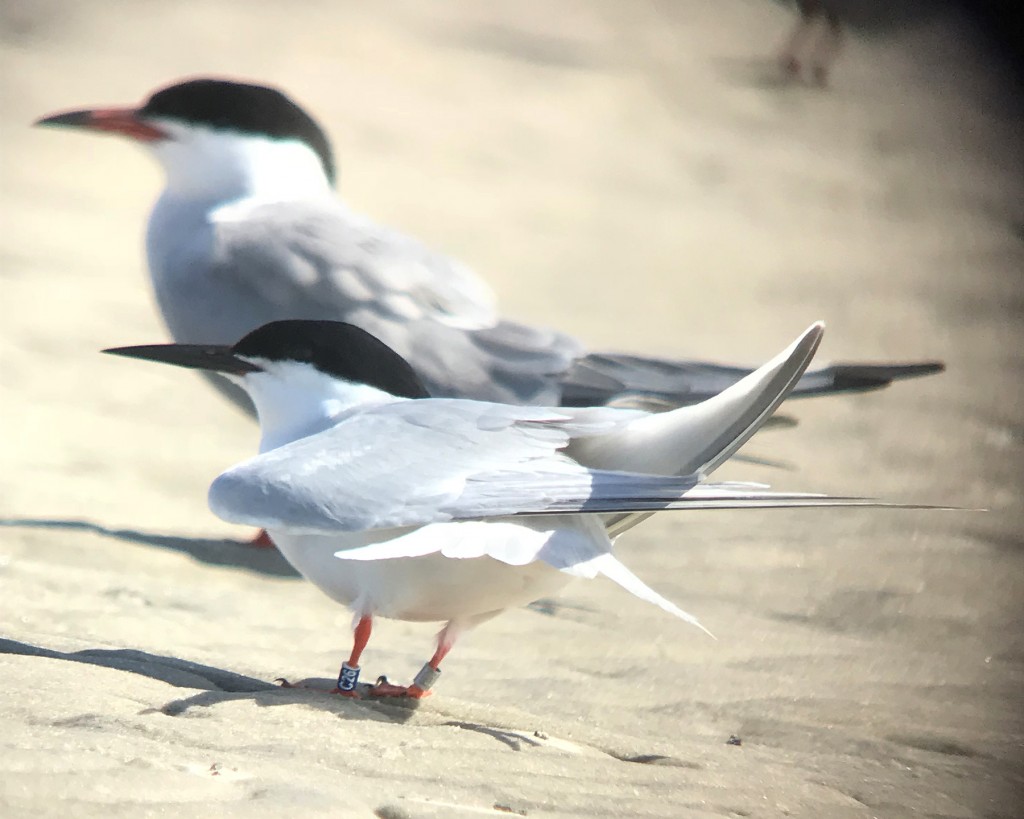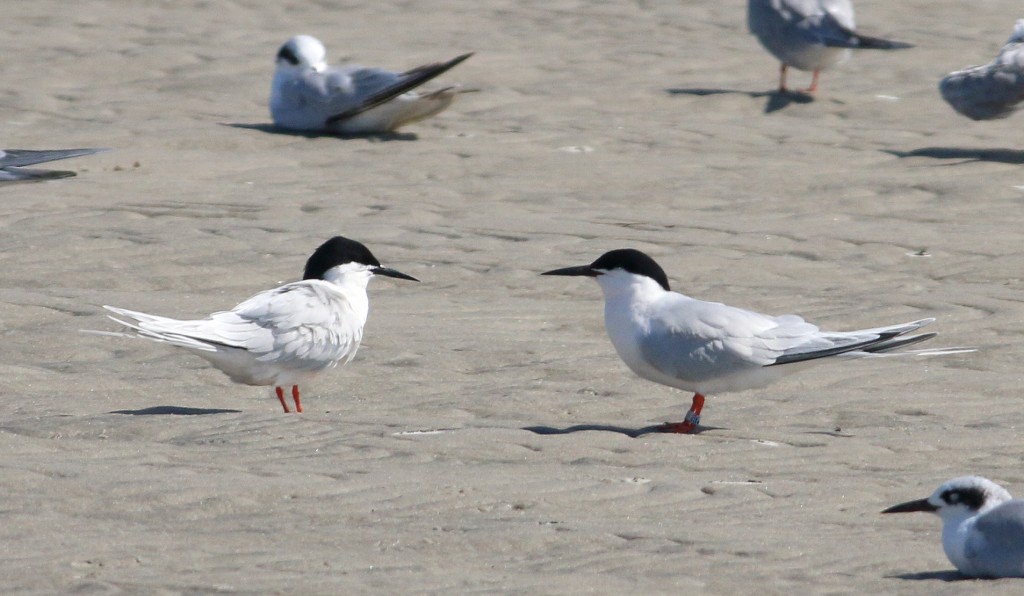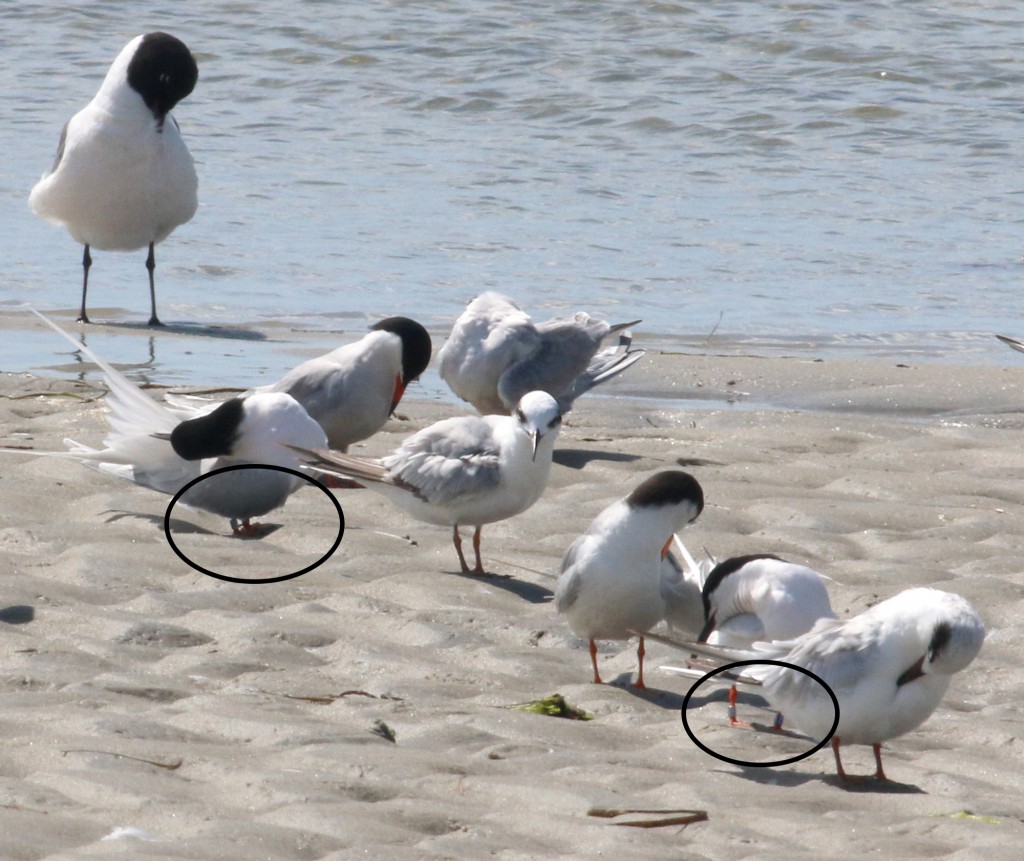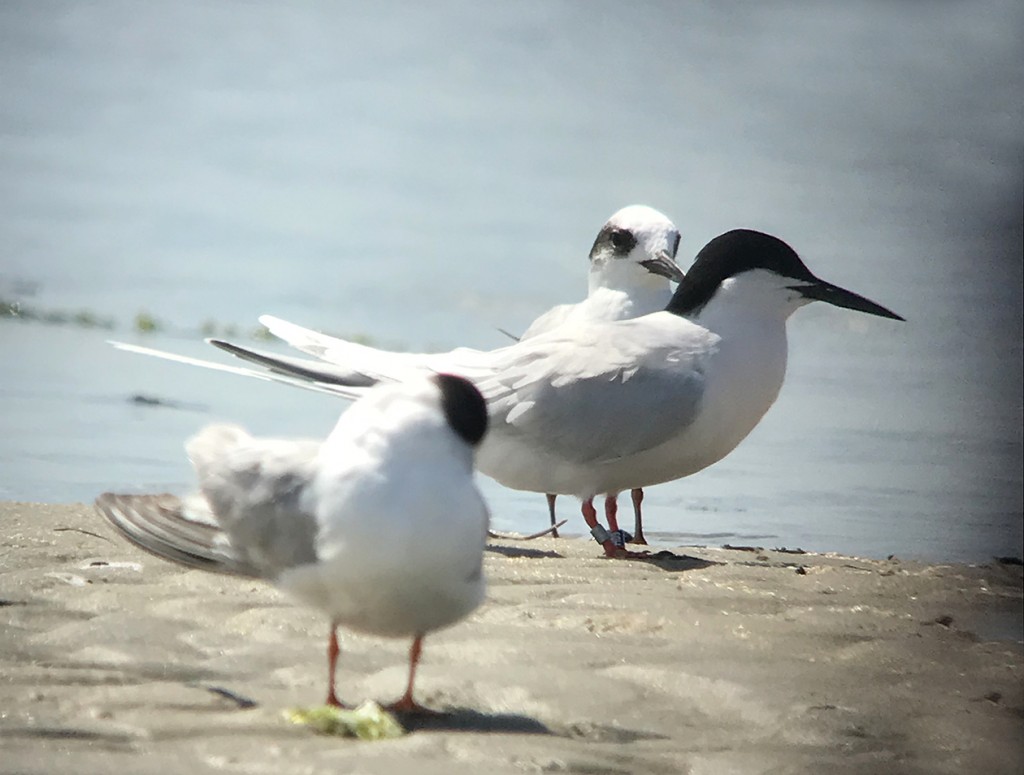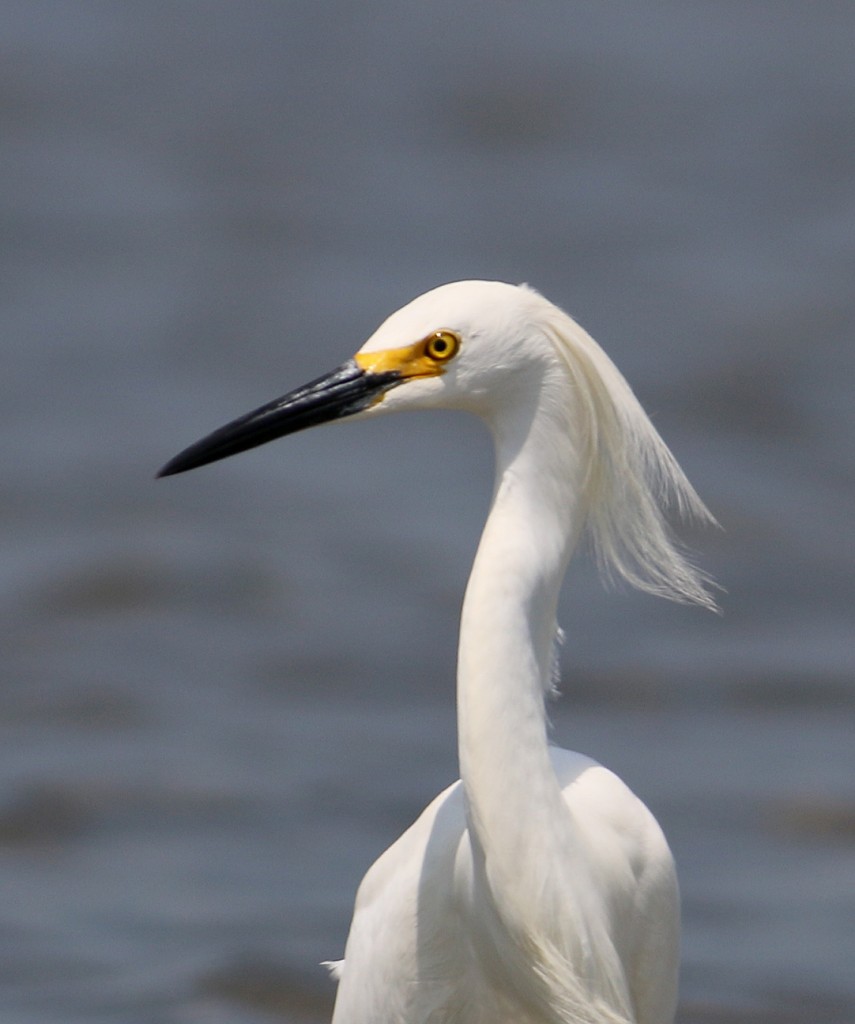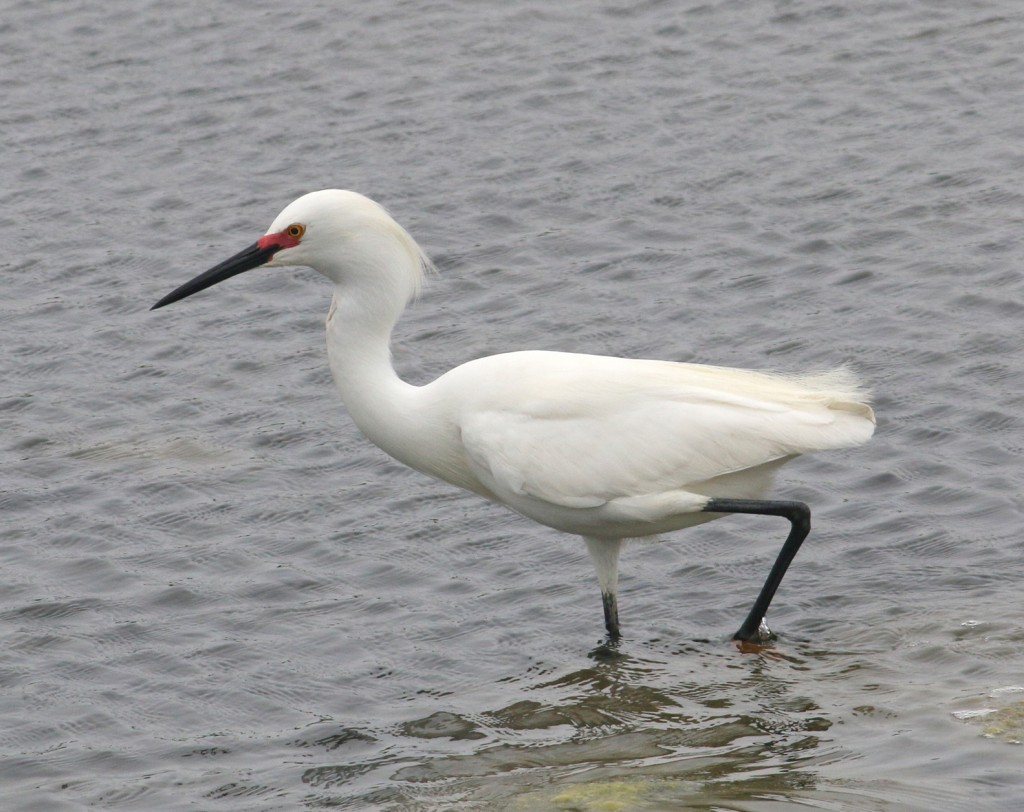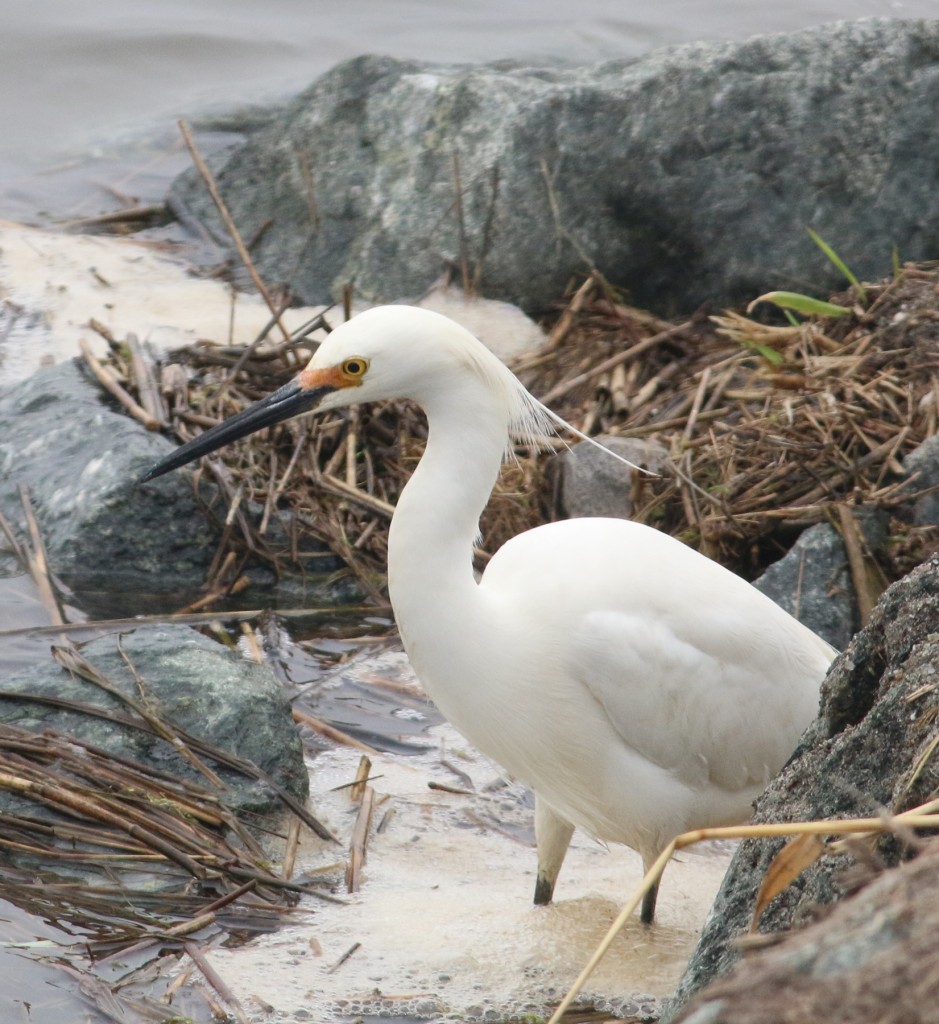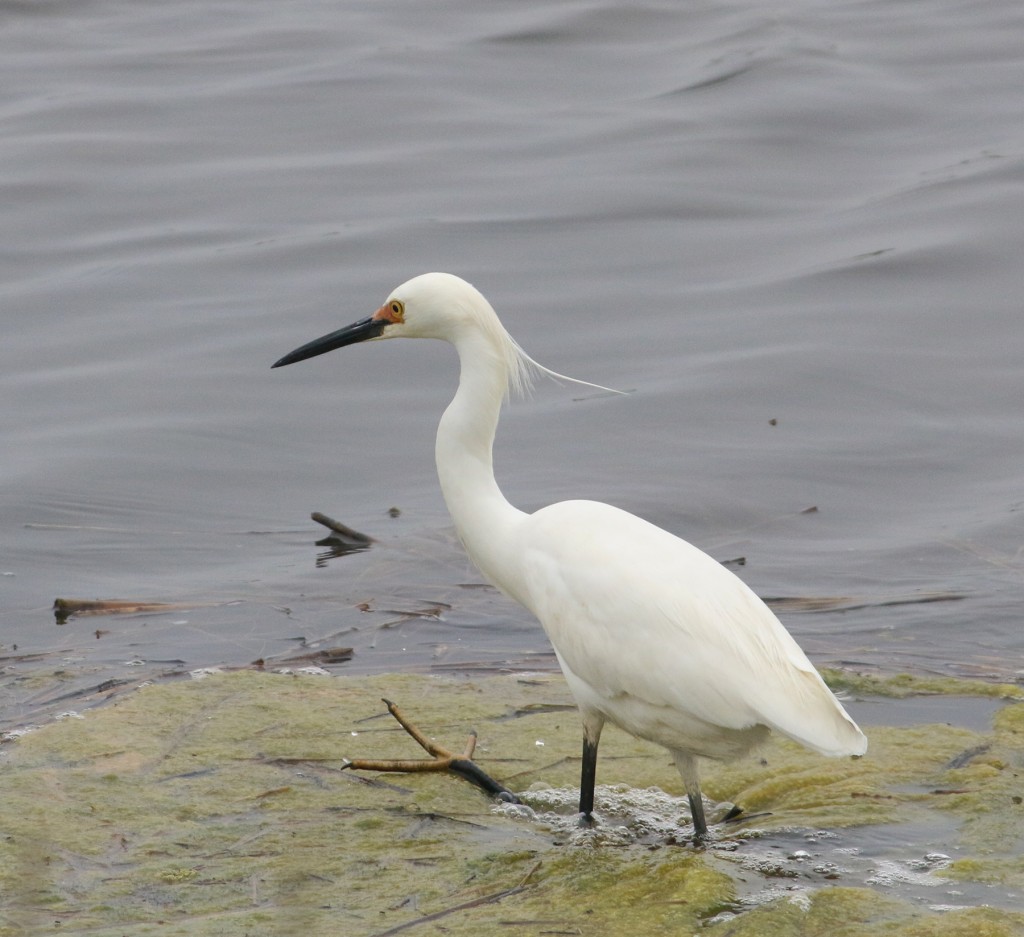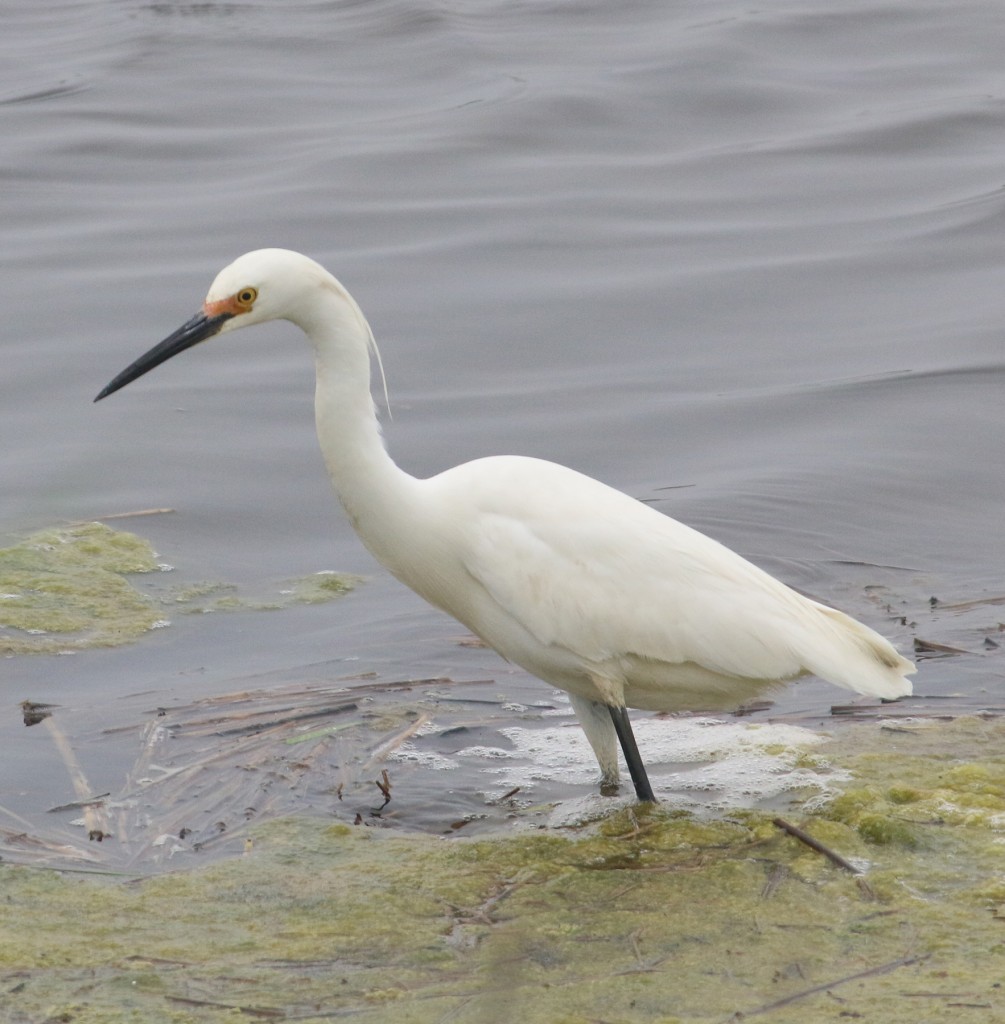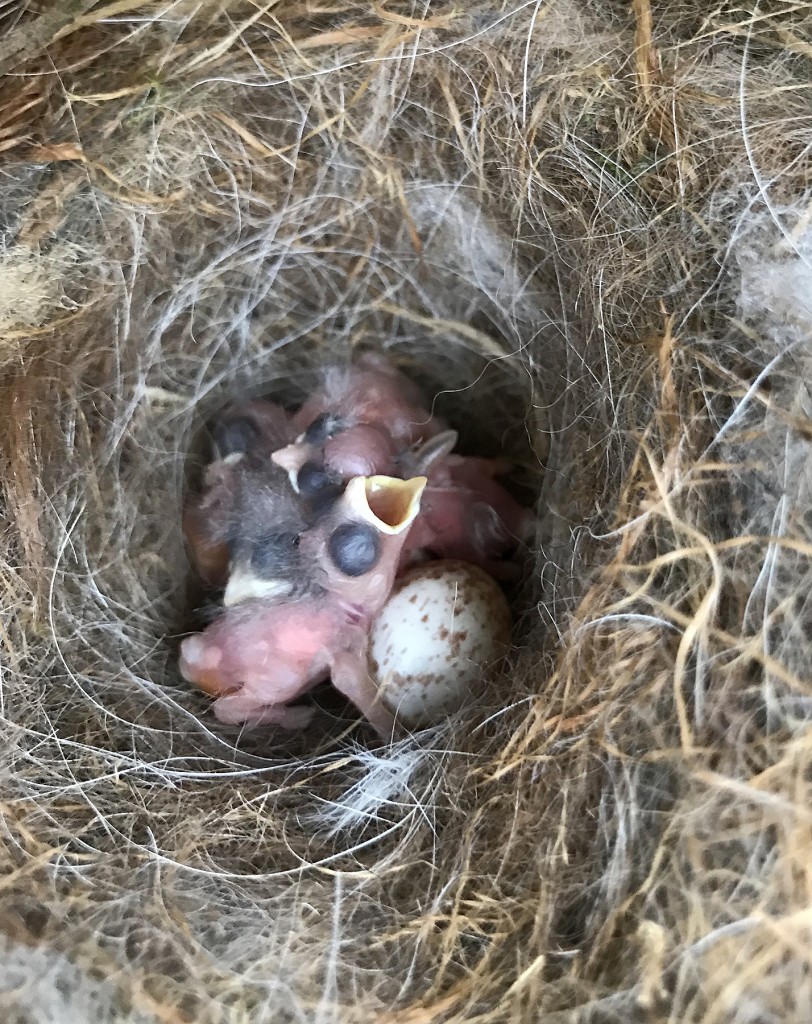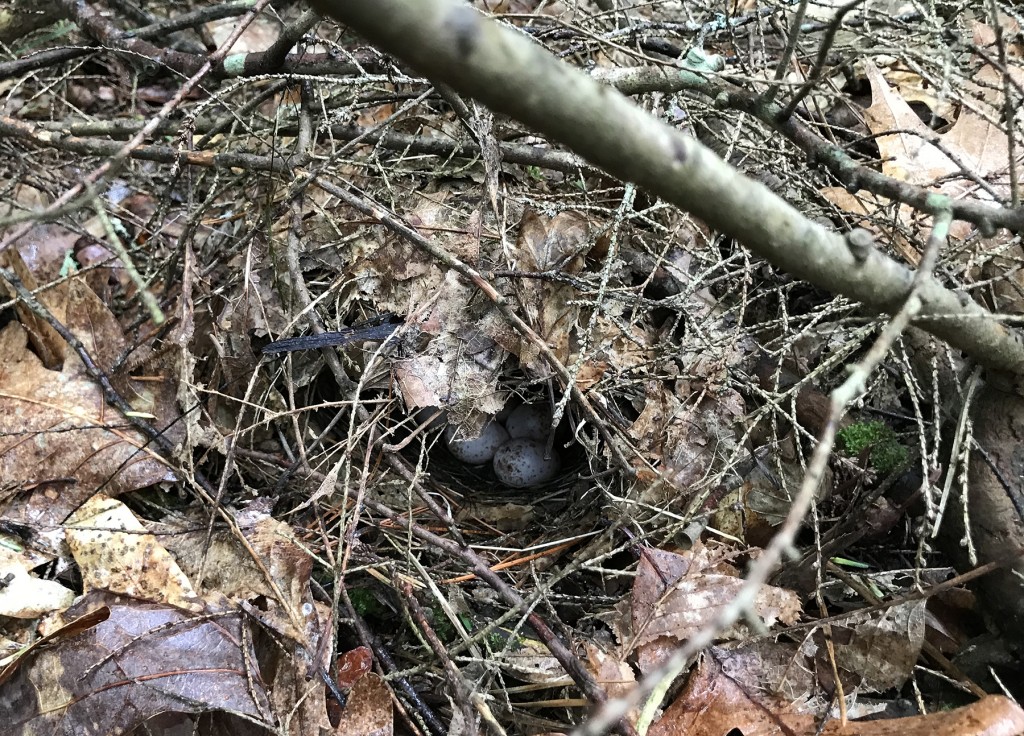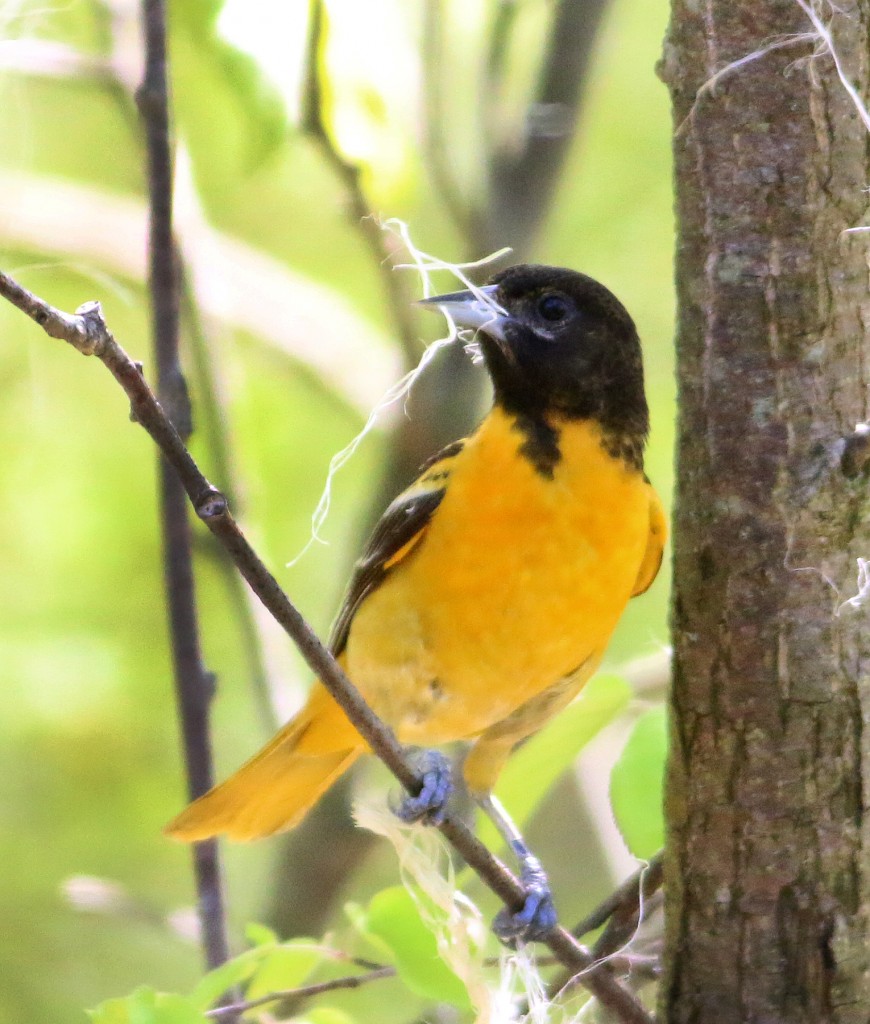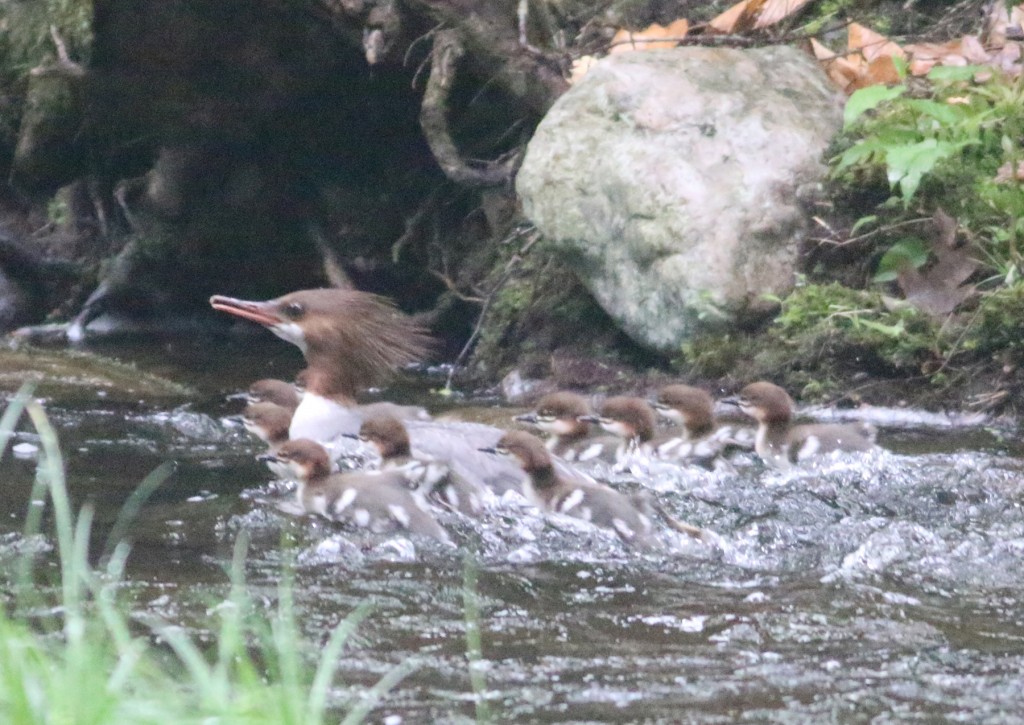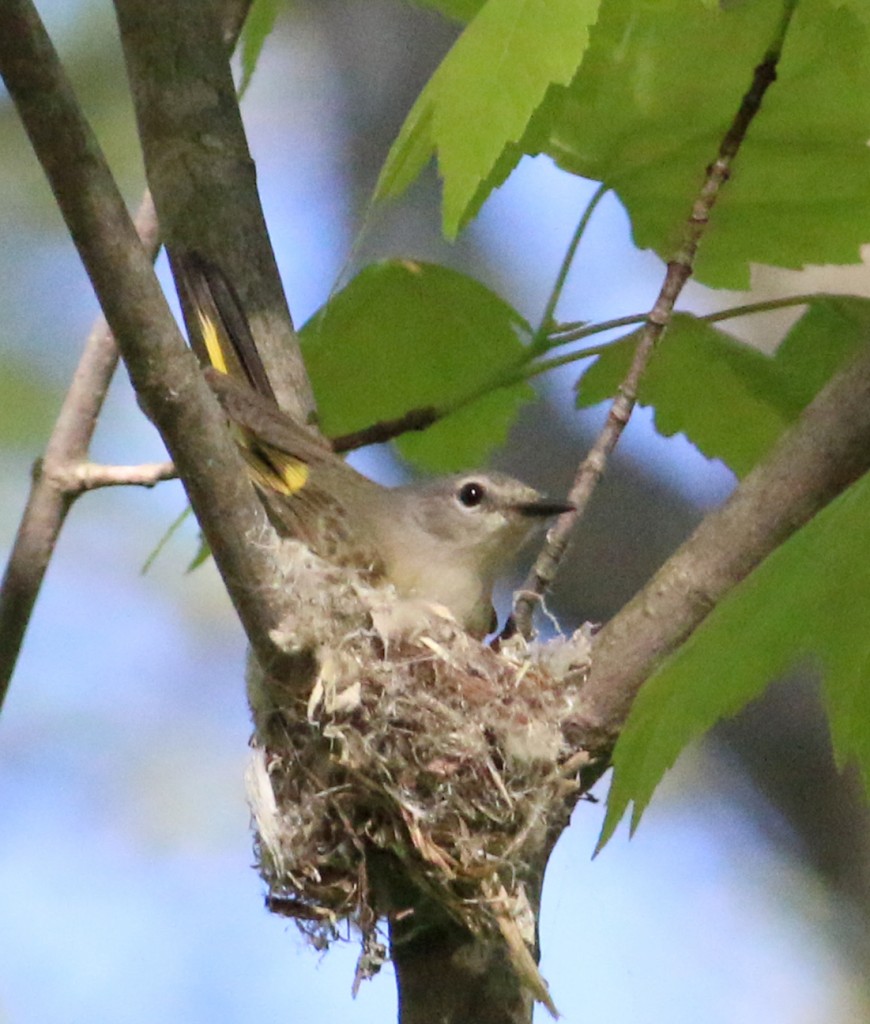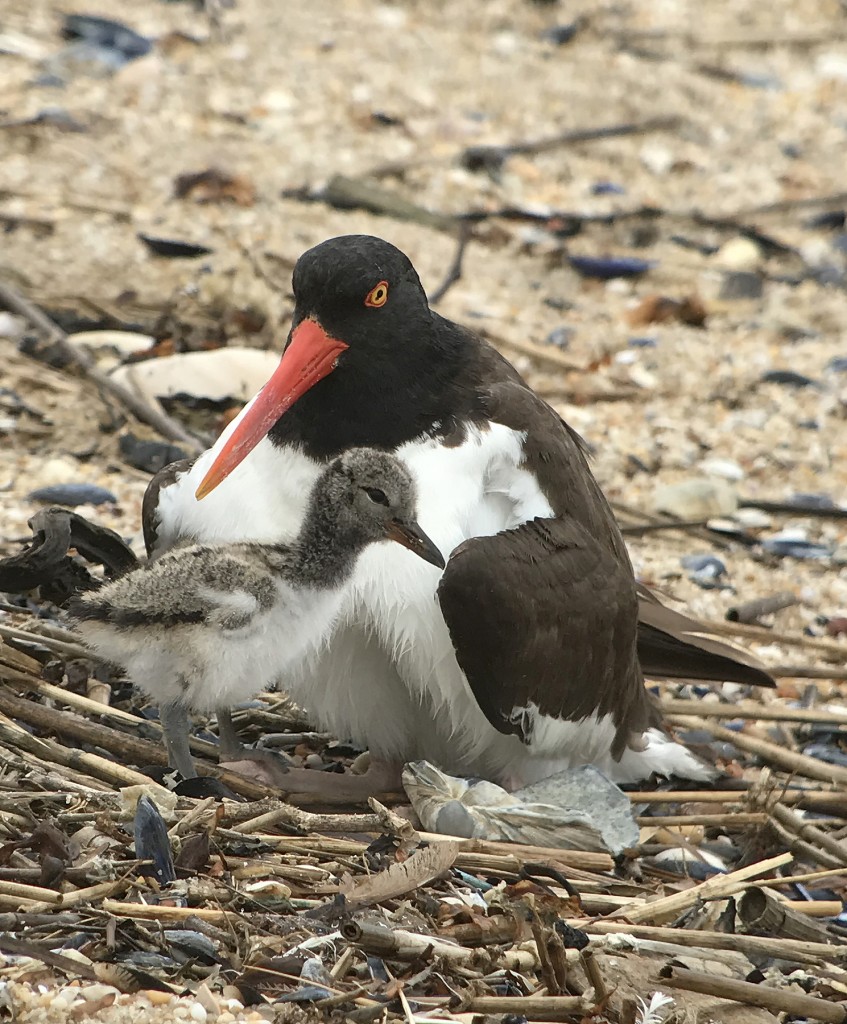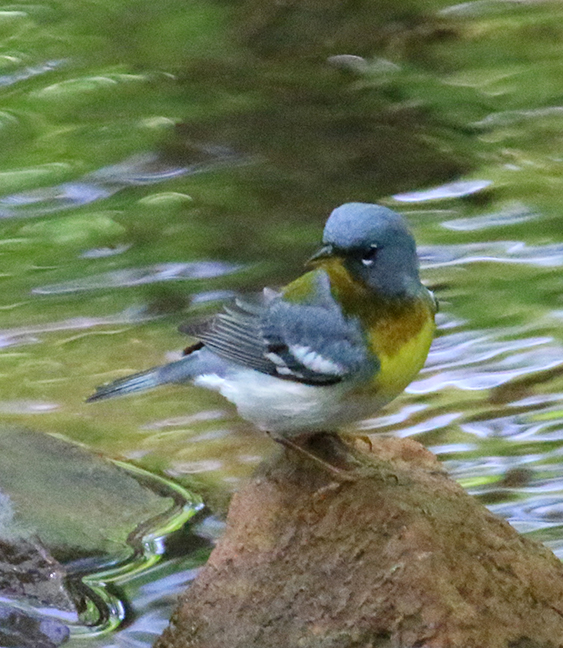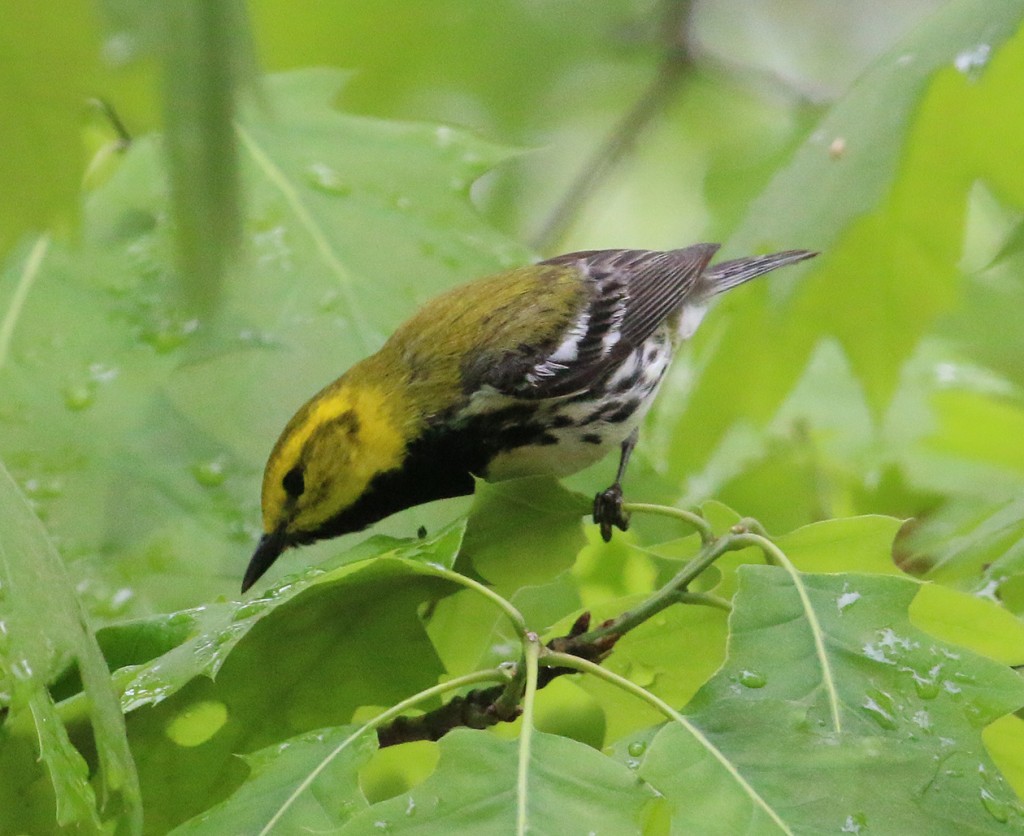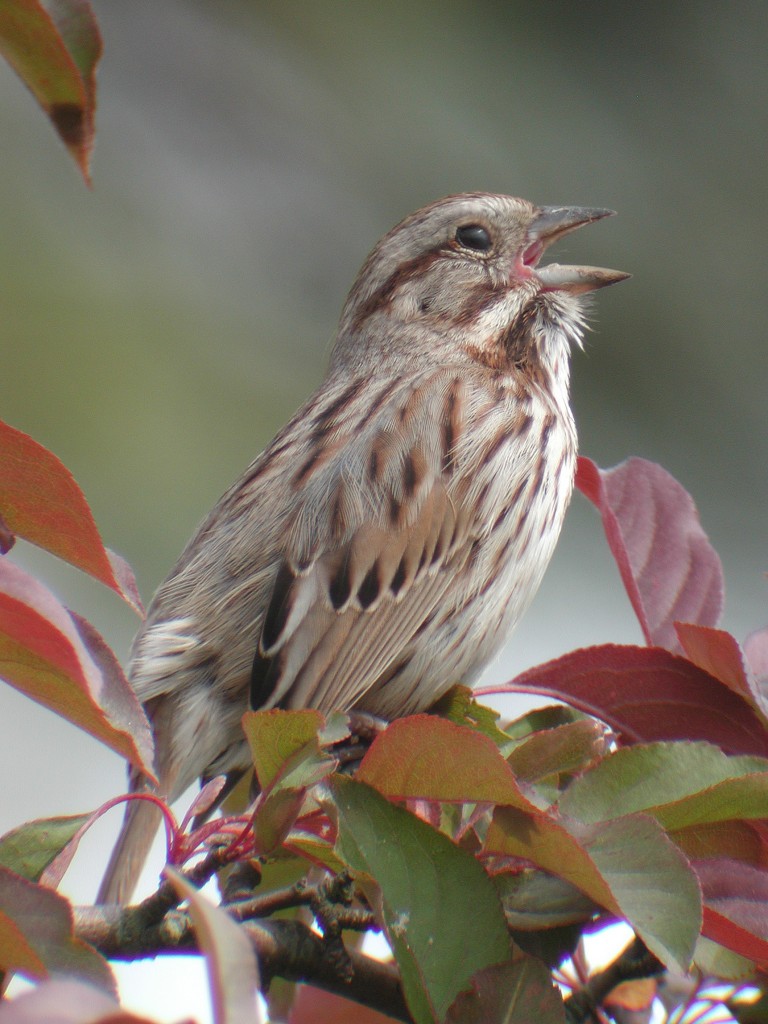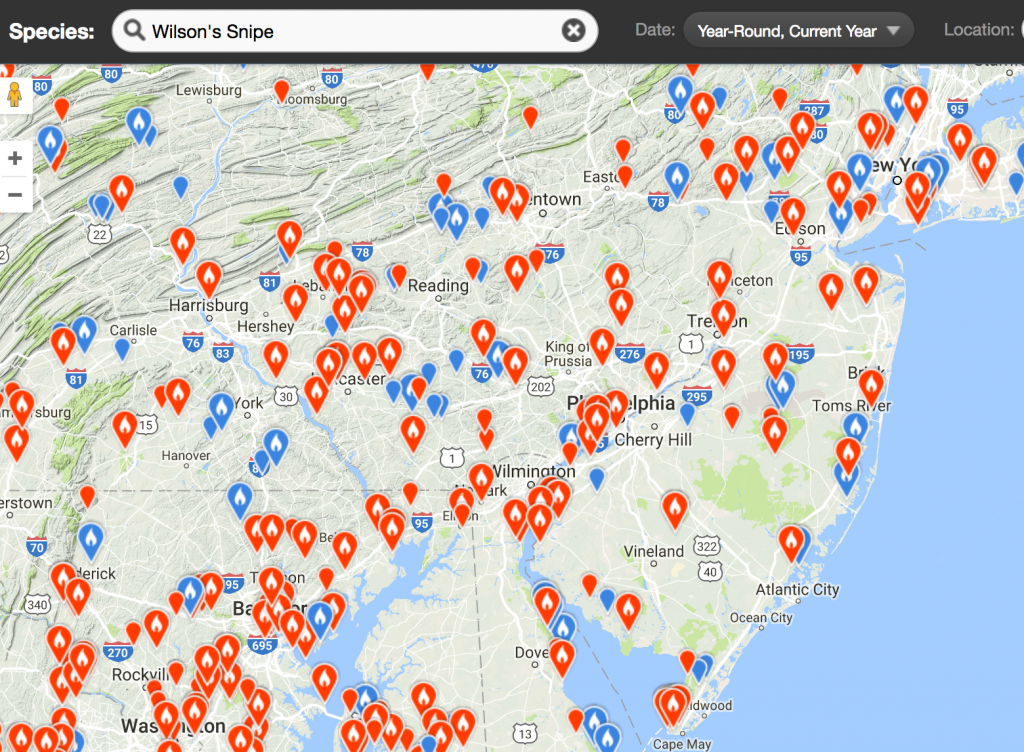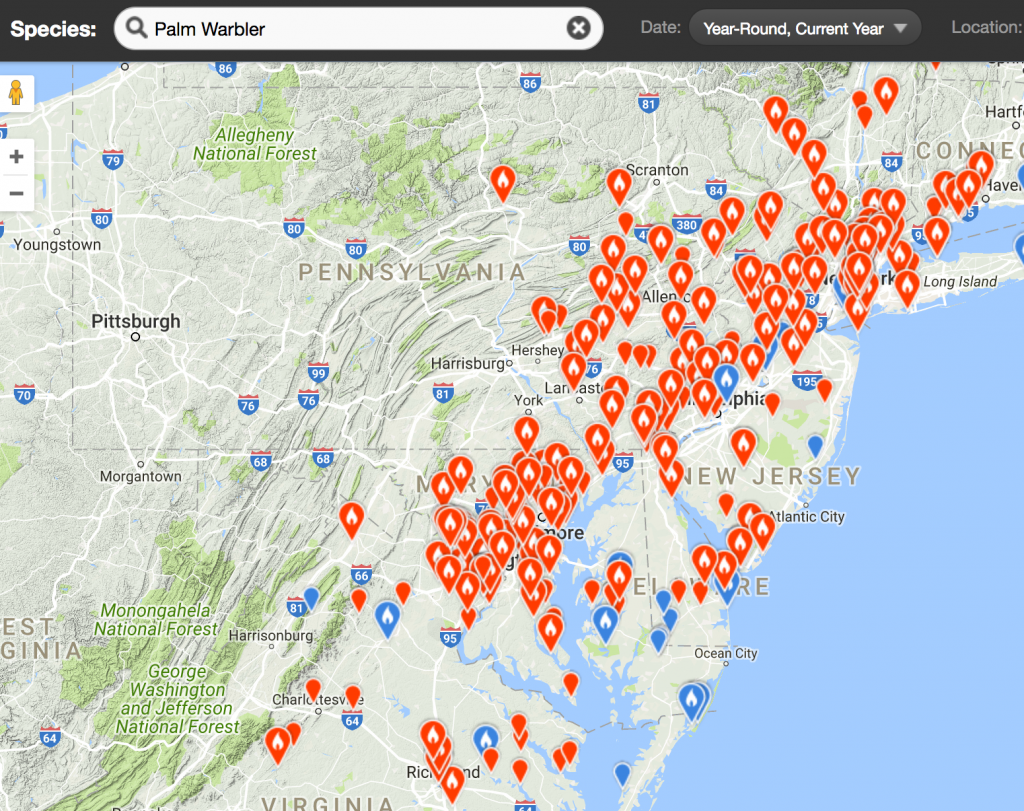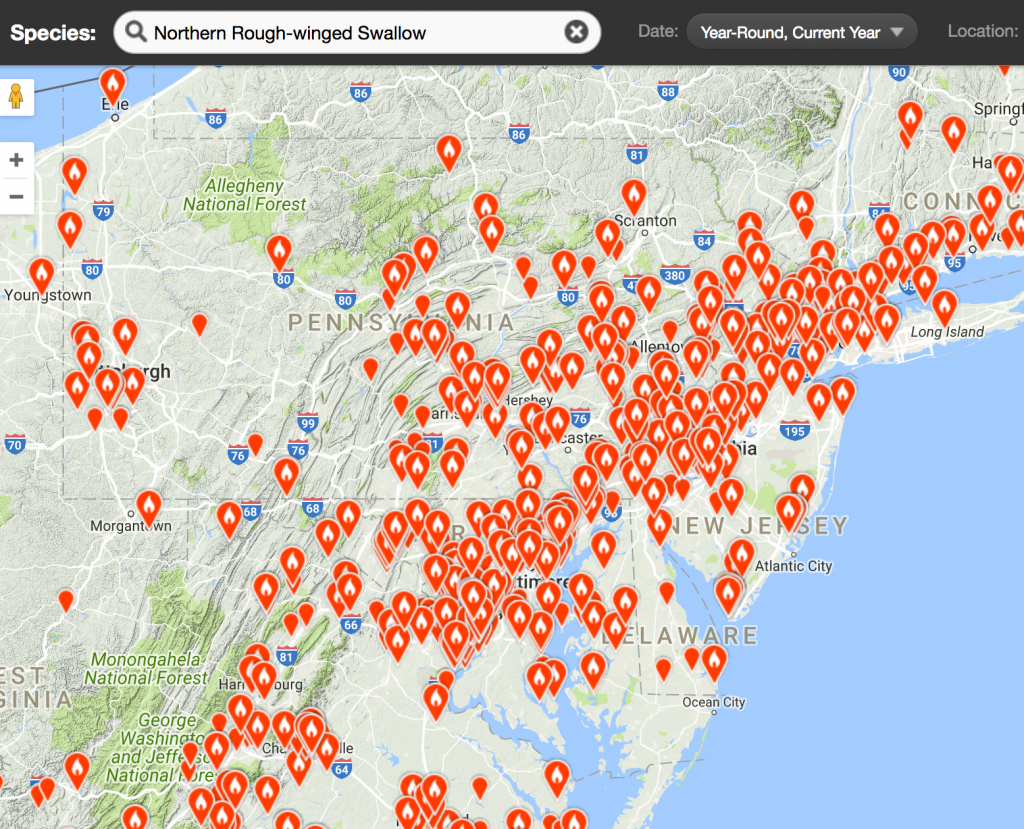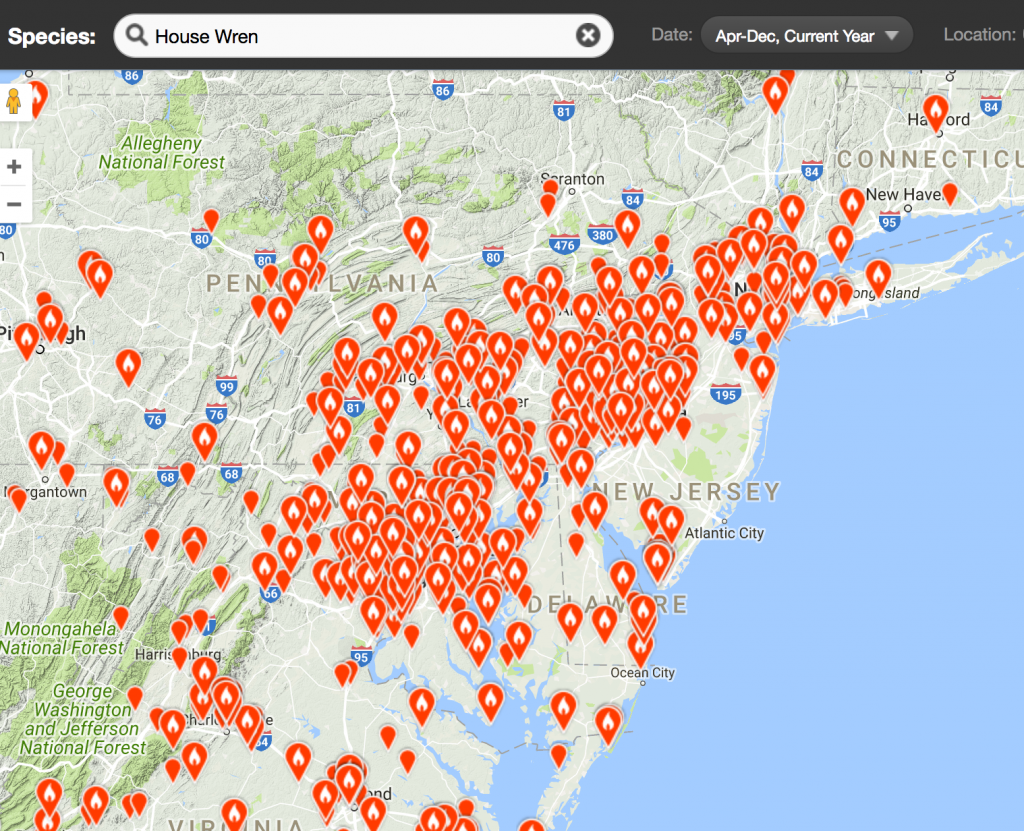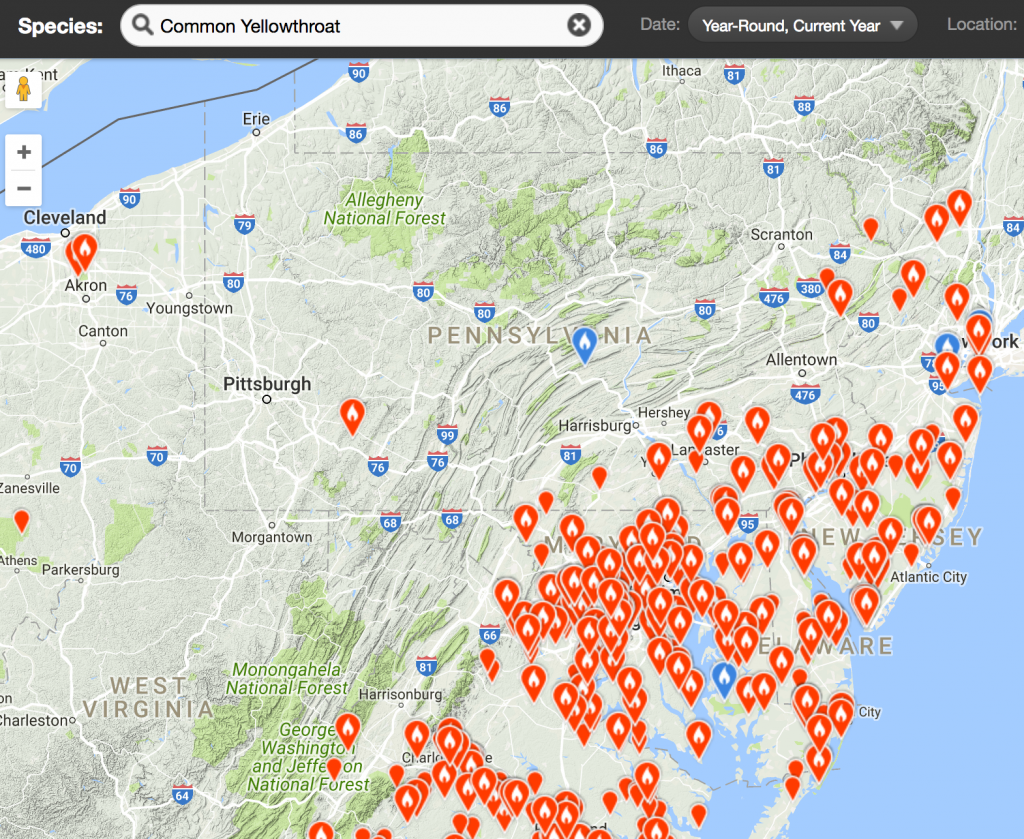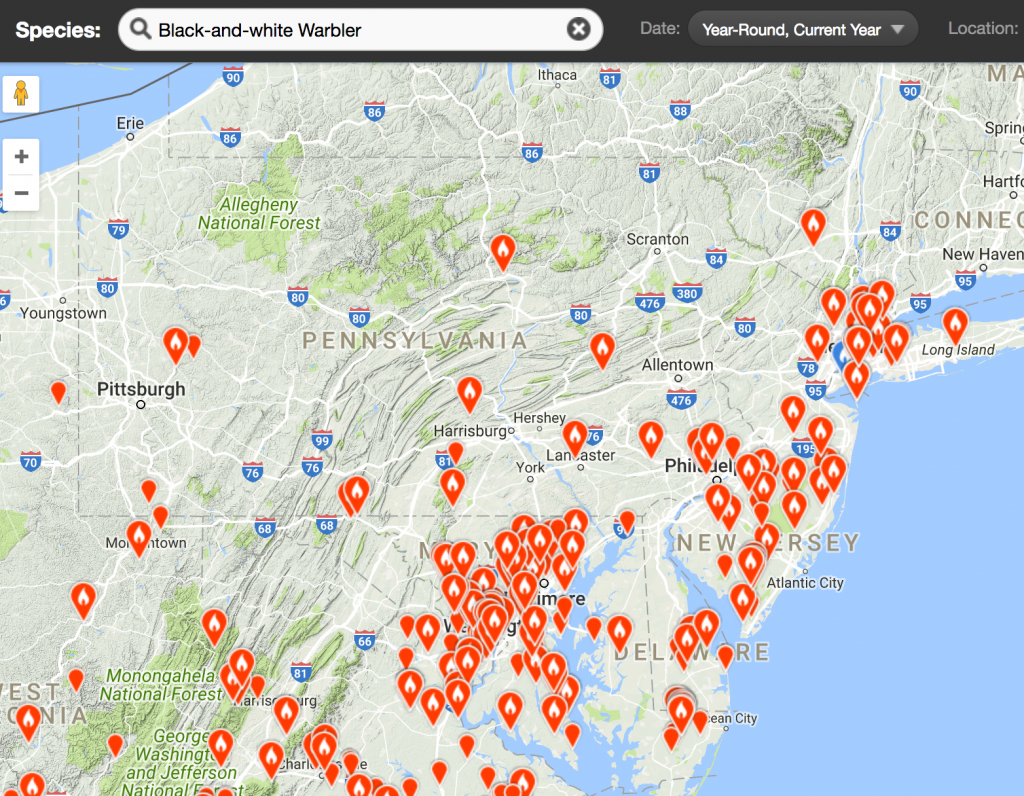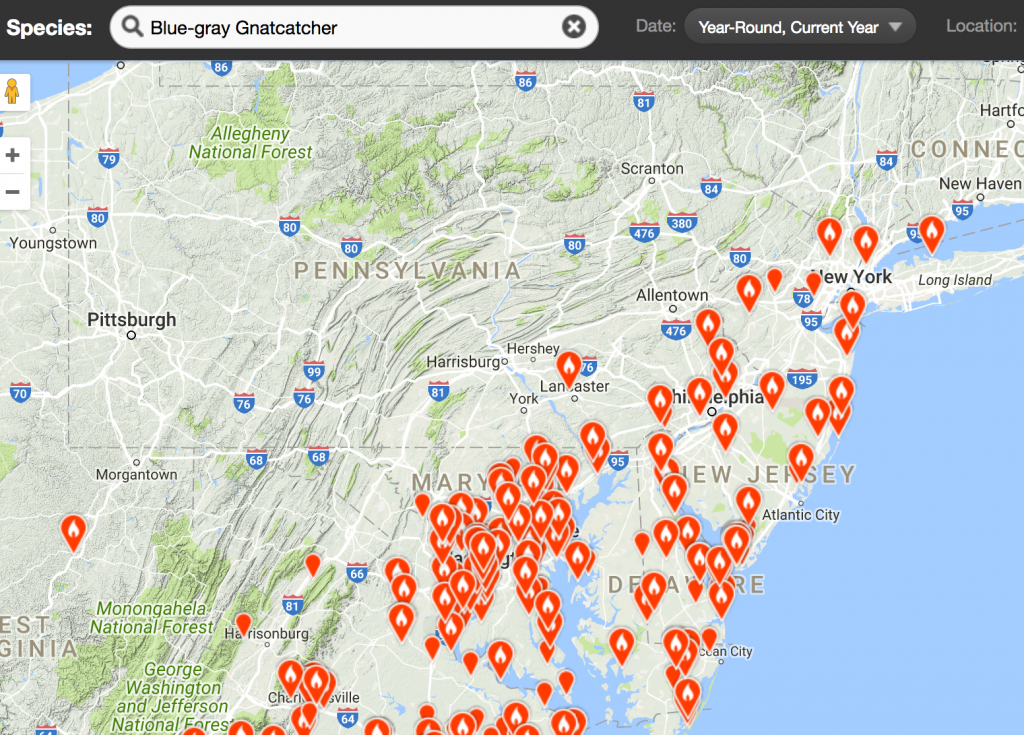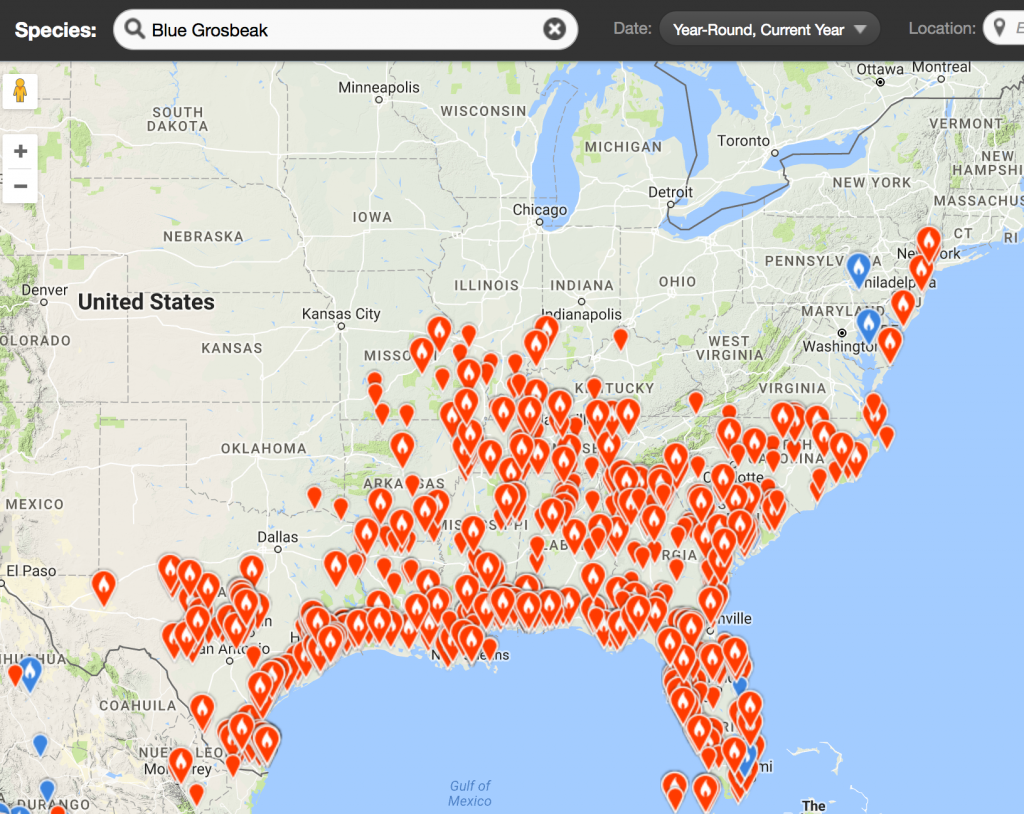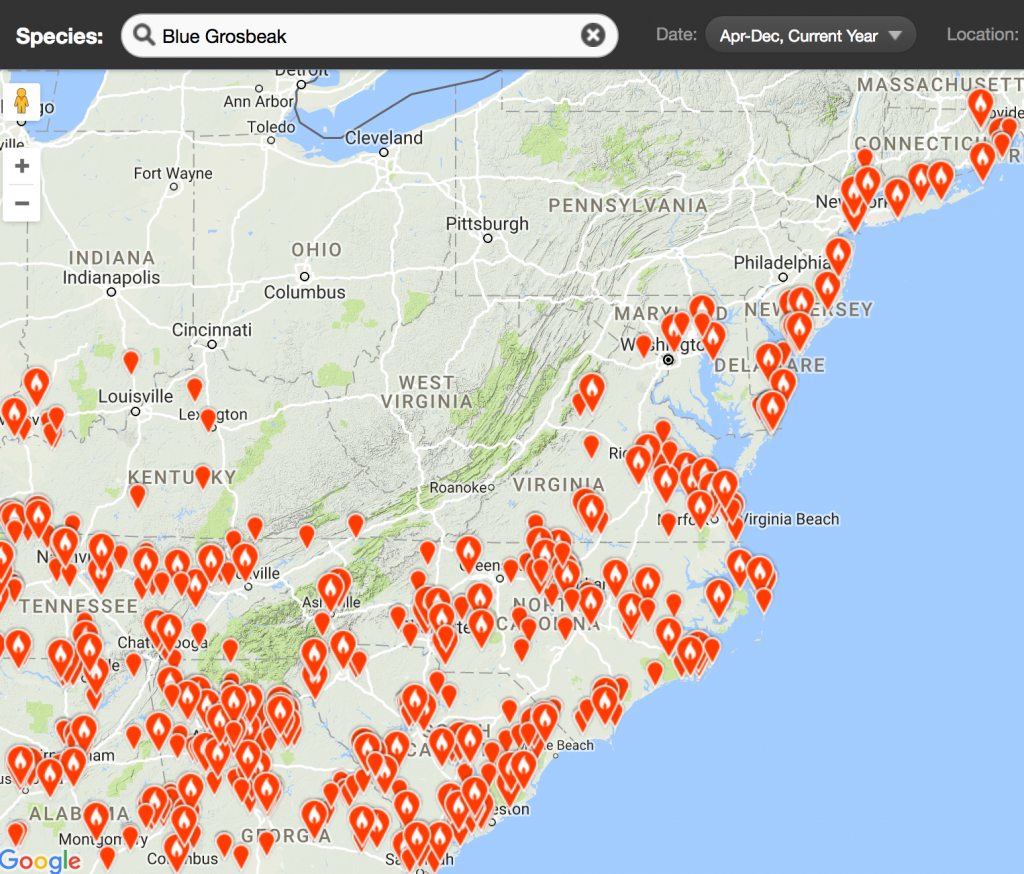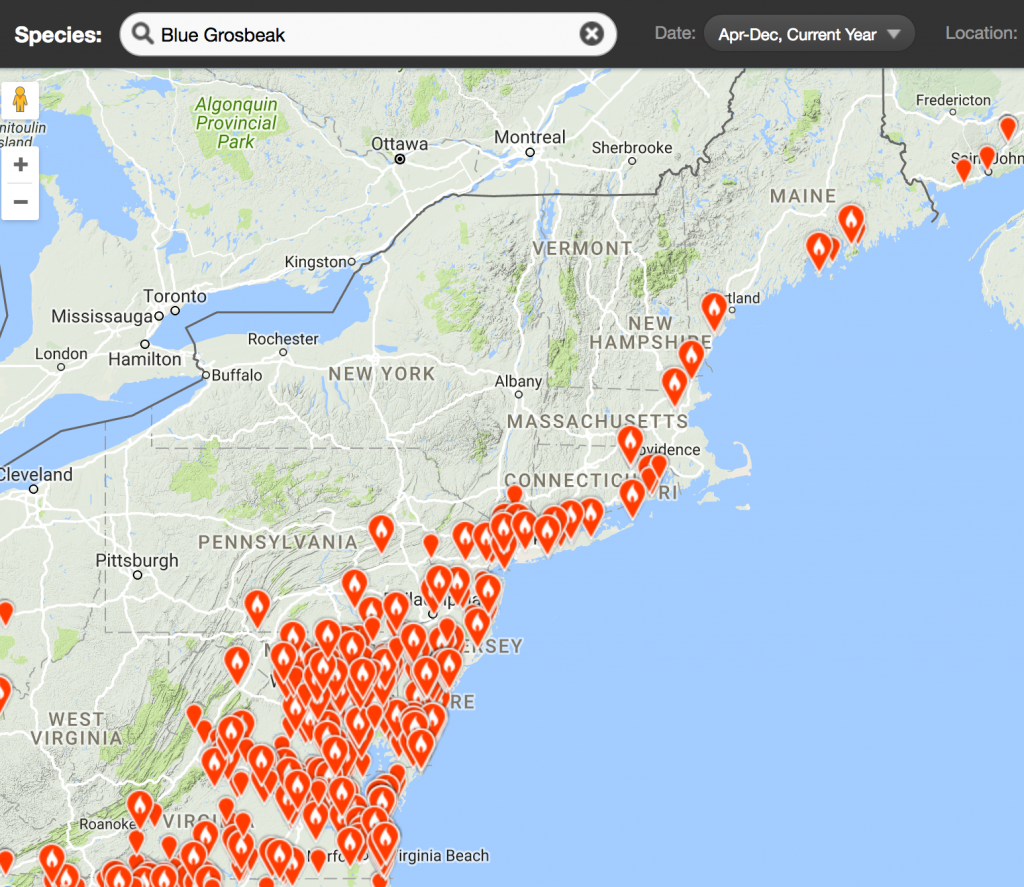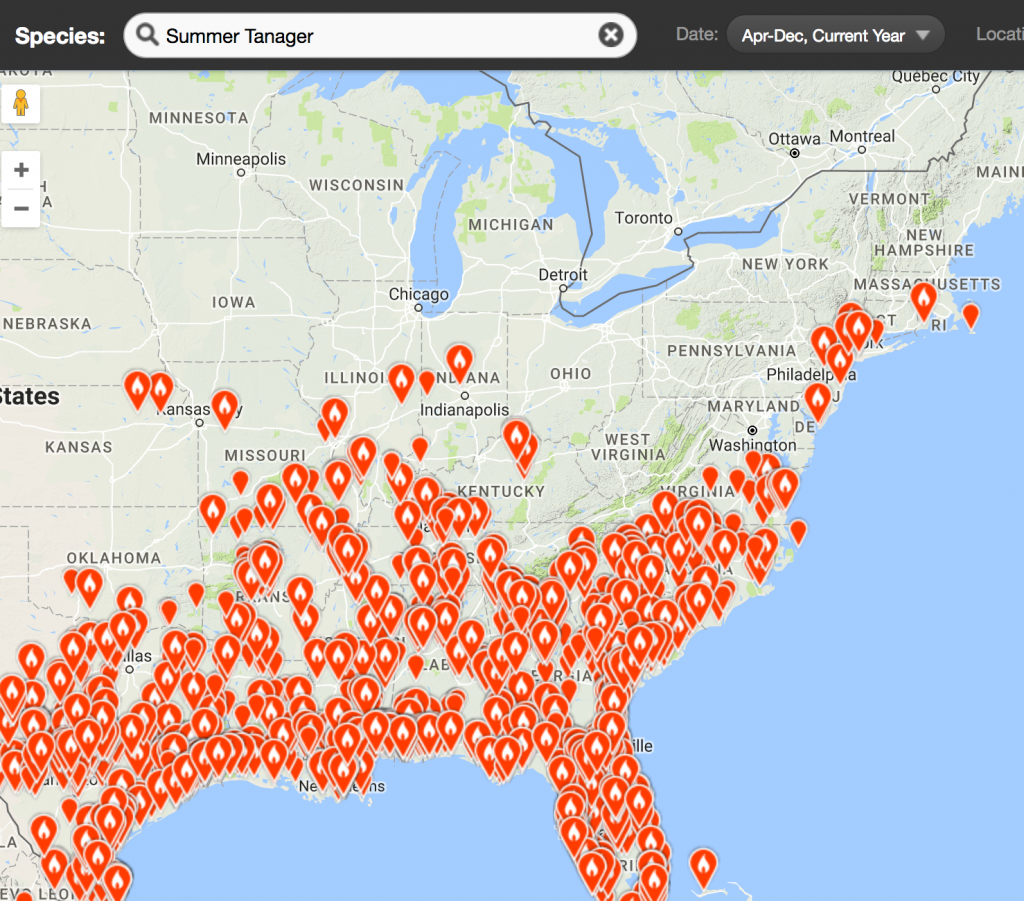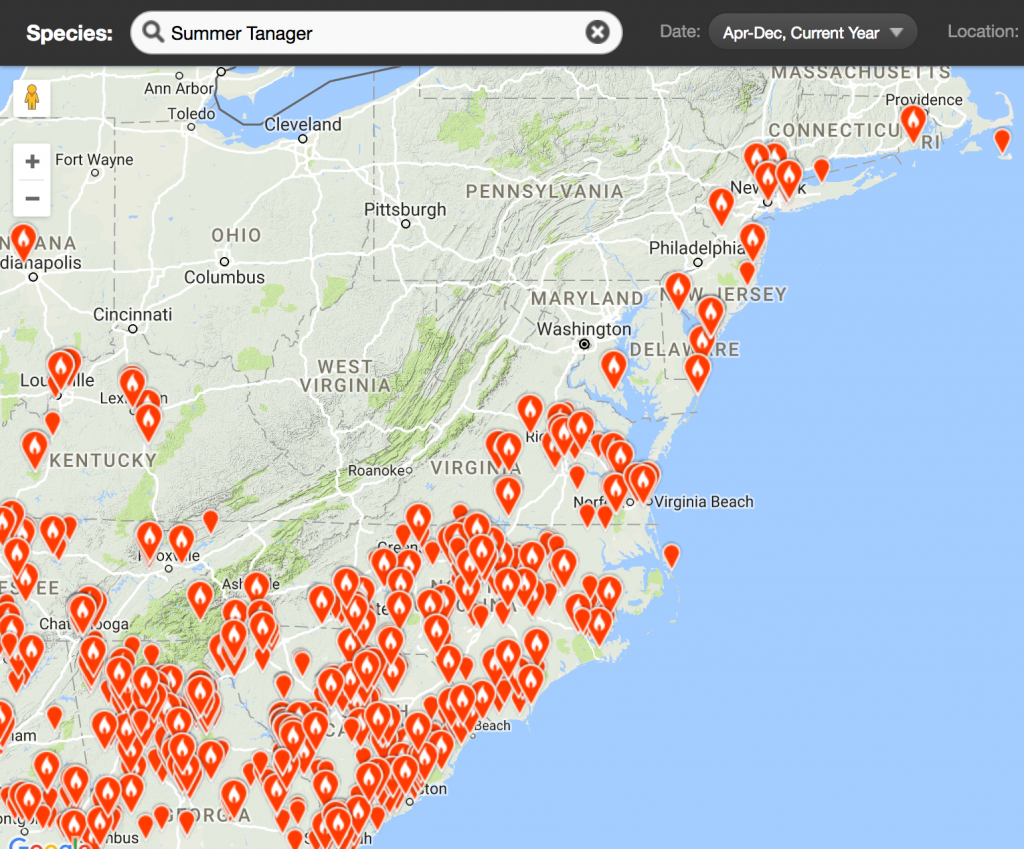In a previous post I described patterns of early spring short-distance migrant sightings here in the New Jersey area. Since then I have continued to explore the eBird sightings data, and after looking at the maps, I am envious of those living in the northwest part of the state, who appear to be on a direct migration path for many species that are seen far less frequently here in the Pinelands, along the coast, or even in Cape May (the home of “So. Many. Birds.”).
Why am I envious? Let’s explain by starting with the pattern expected of birds that essentially migrate uniformly northward, not being affected by larger bodies of water like the Chesapeake or Delaware Bays. This group is typified by Scarlet Tanager, Great Crested Flycatcher, Eastern Kingbird, Yellow-breasted Chat, and Northern Parula that can be found throughout the state. That’s reassuring to see, but it’s also expected, so nothing too unusual there.
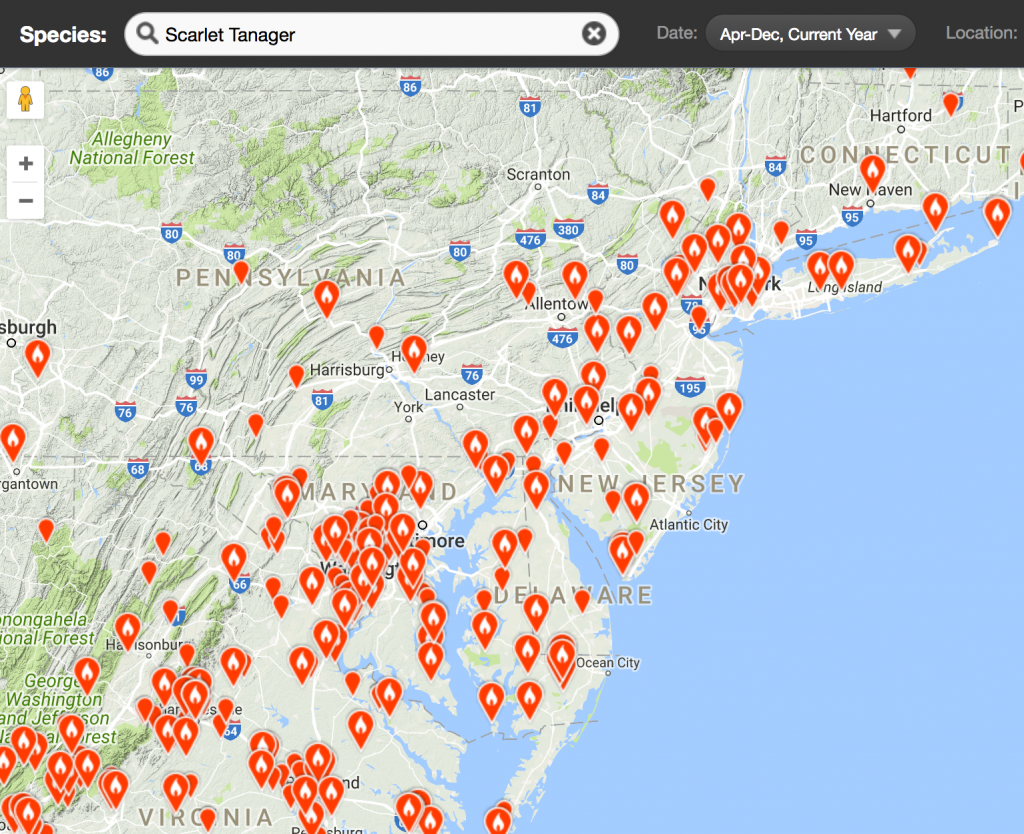
Scarlet Tanager sightings as of May 1, distributed fairly evenly across NJ and DelMarVa.
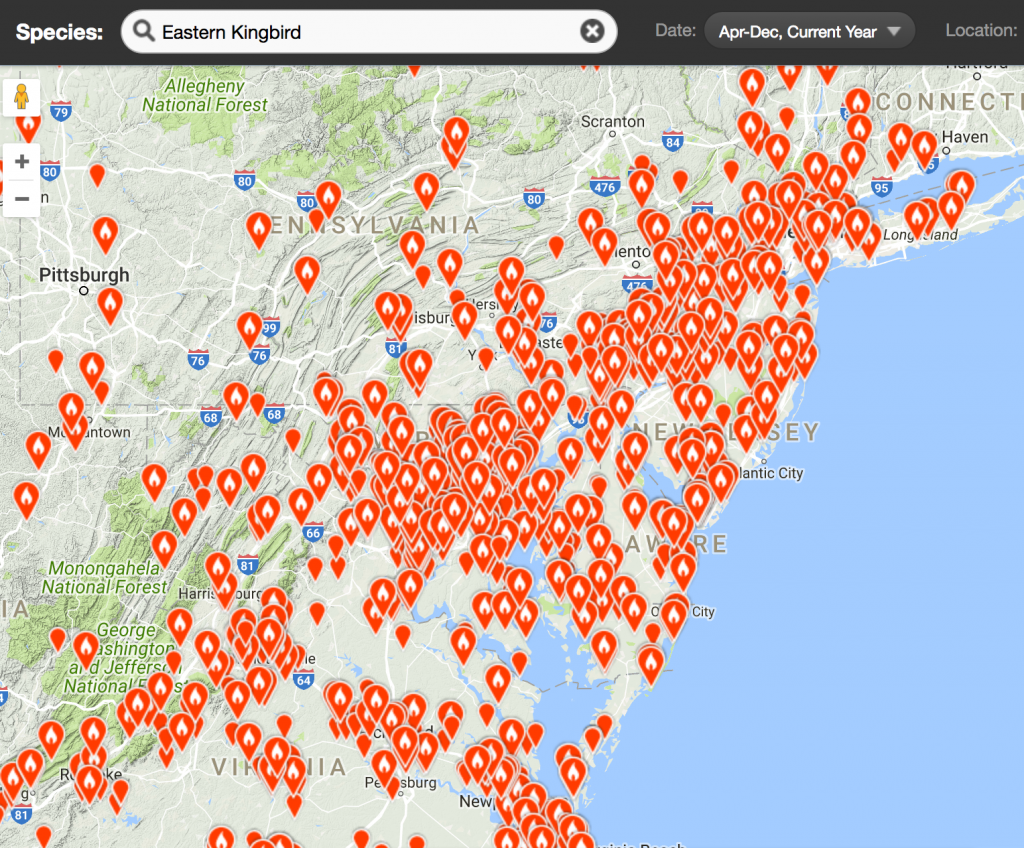
Eastern Kingbird sightings as of May 1. Like Scarlet Tanager, it is found all over NJ and DelMarVa.
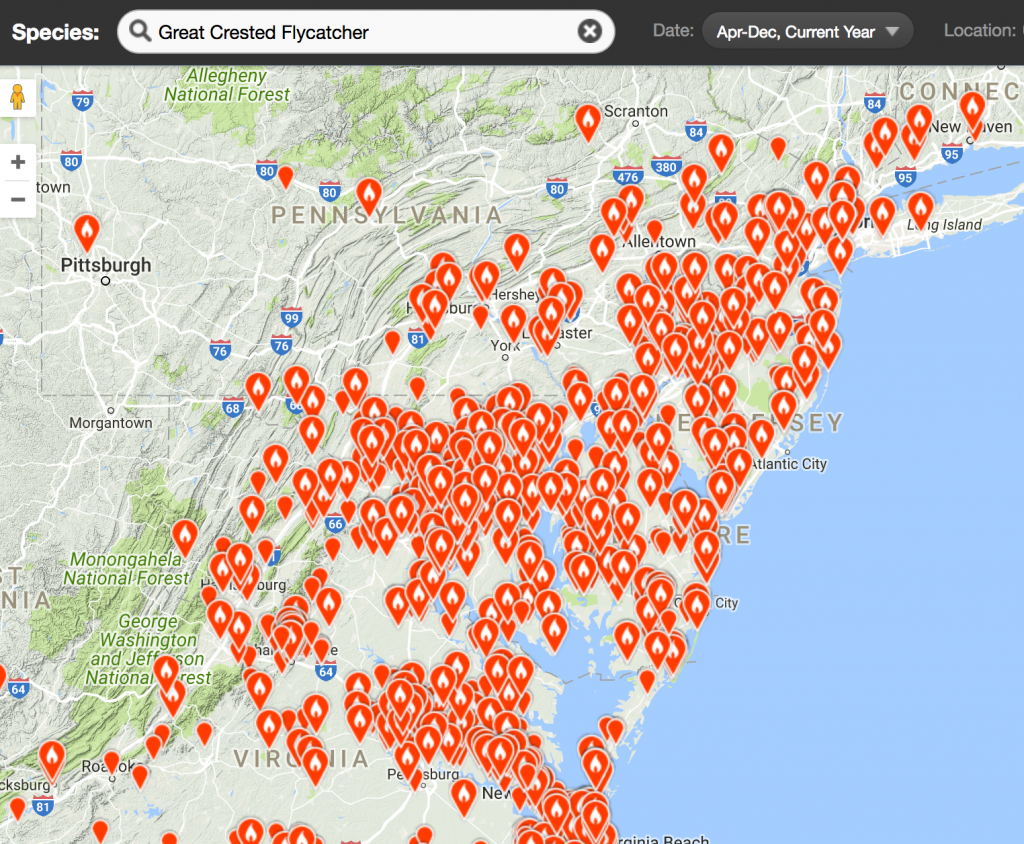
Great Crested Flycatcher is also abundant all over our area and is evenly distributed.
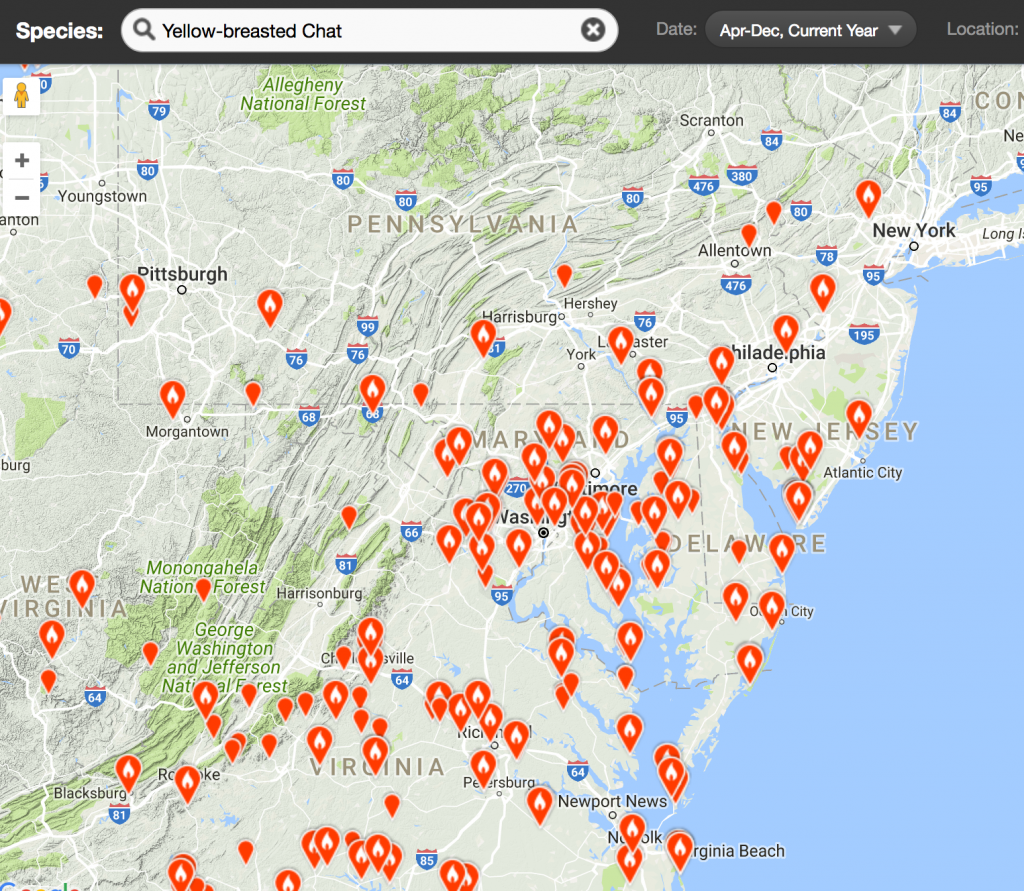
Yellow-breasted Chat is just starting to appear in the area, but seems to be evenly distributed as of May 4.
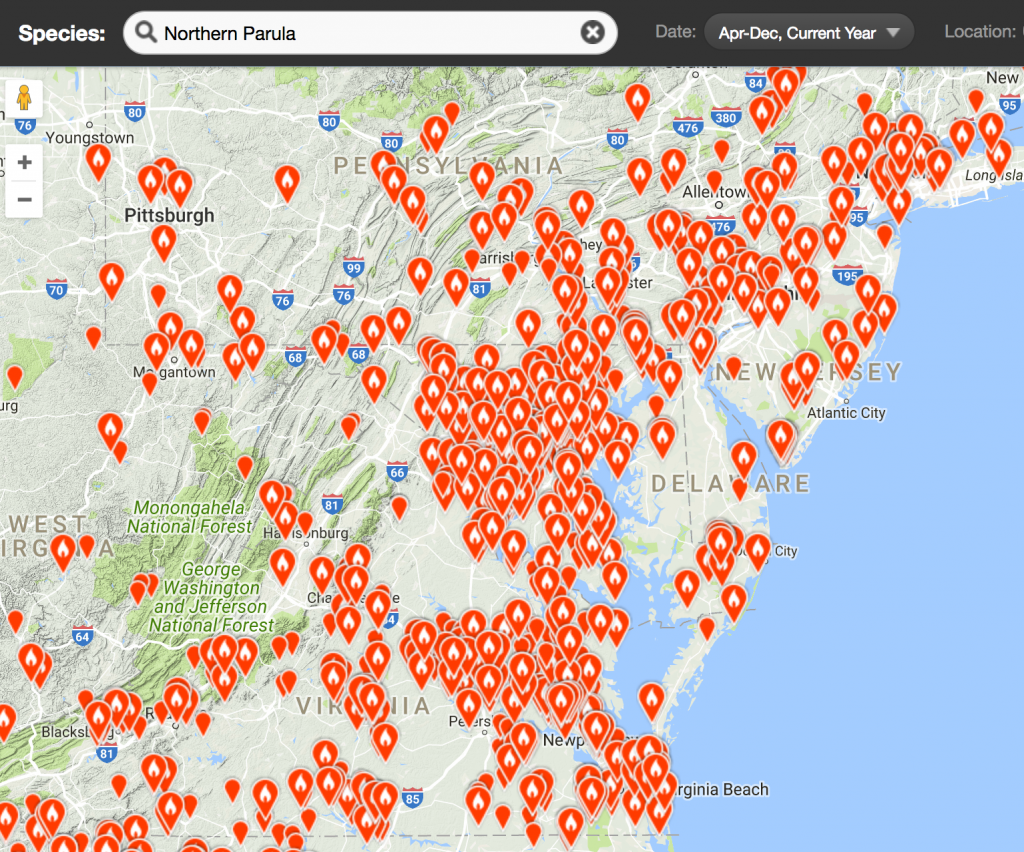
As of April 28, Northern Parula was being seen along the immediate coast and also inland, with perhaps a slight preference to inland locations.
The more interesting thing is that not all species show this pattern. In fact, it will be interesting to see whether this pattern is the exception or the rule. For example, take a look at recent sightings of Warbling Vireo. Here we have a species that is barely being seen along the east coast south of Virginia, but instead is presumably migrating up the central flyway through Texas and the midwest, and then spreading northeastward. There are few sightings in south Jersey including Cape May, while it is being seen routinely north and even northeast of us, up into Massachusetts. This is clearly different from what we saw with that first group of birds described above.
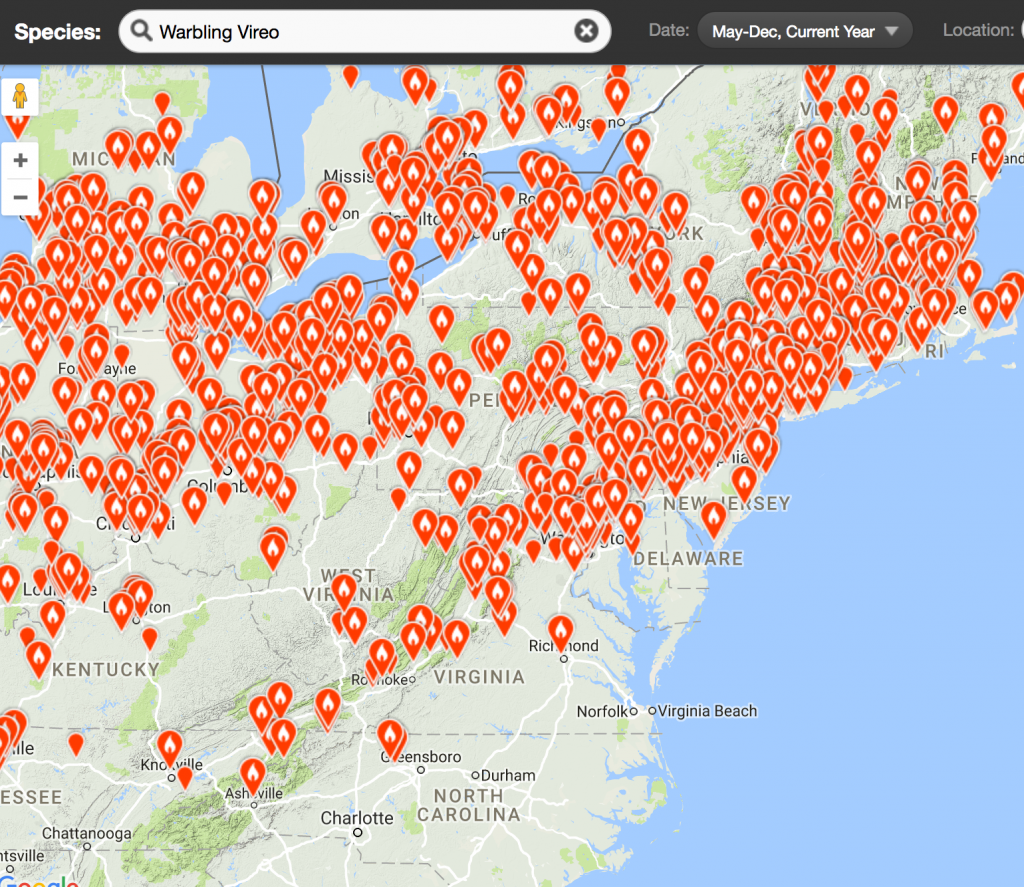
Warbling Vireo sightings as of May 4, showing the absence of sightings along the south Atlantic coast.
A similar pattern is seen for other species that presumably migrate primarily through the central flyway. Look at Nashville Warbler, Blackburnian Warbler, Bay-breasted Warbler, and Mourning Warbler. After looking at these maps it’s now no surprise to me that it is difficult to find them in our area.
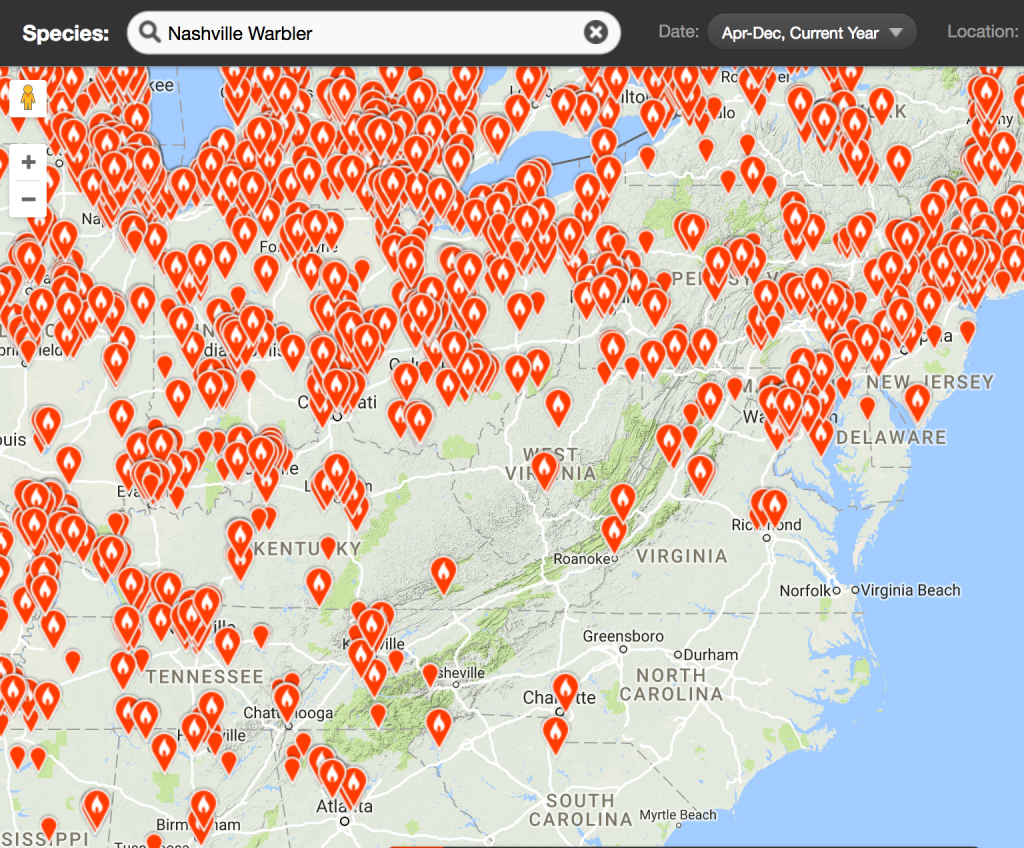
Nashville Warbler sightings as of May 4. Like Warbling Vireo, there are very few of them on the east coast south of Virginia.
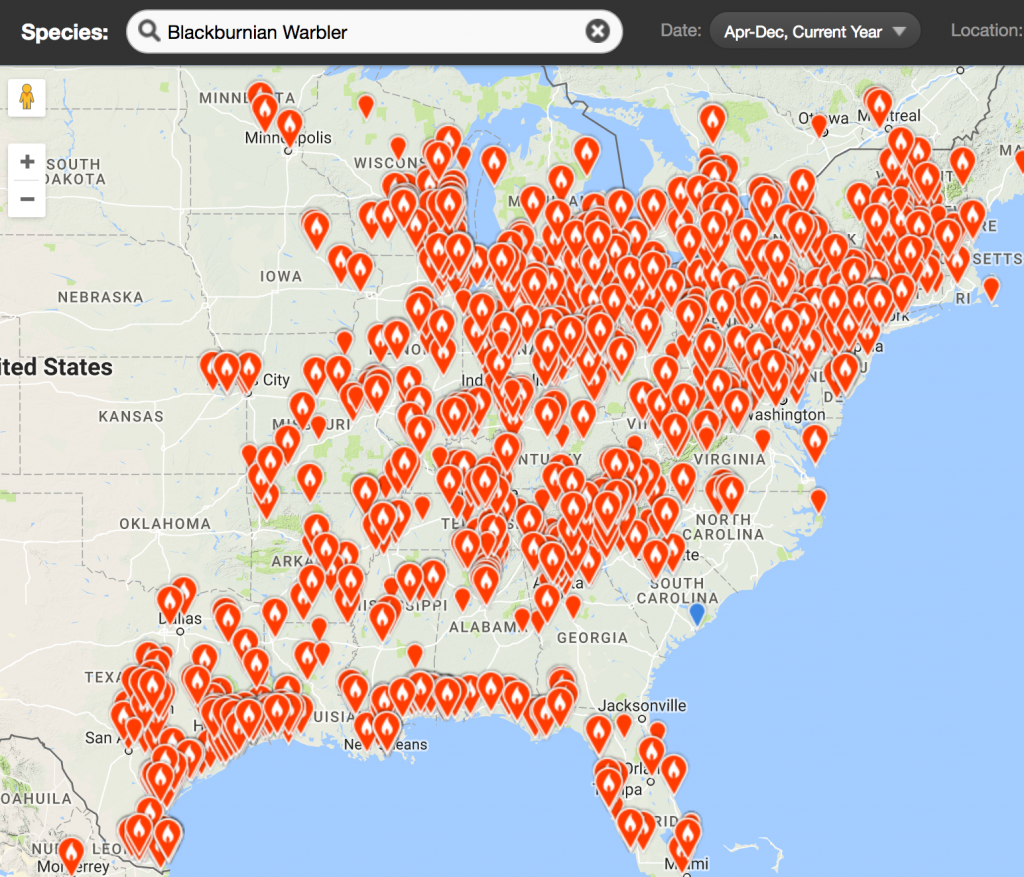
Blackburnian Warbler appears to be a trans-gulf migrant, but then with fewer sightings along the eastern coast.
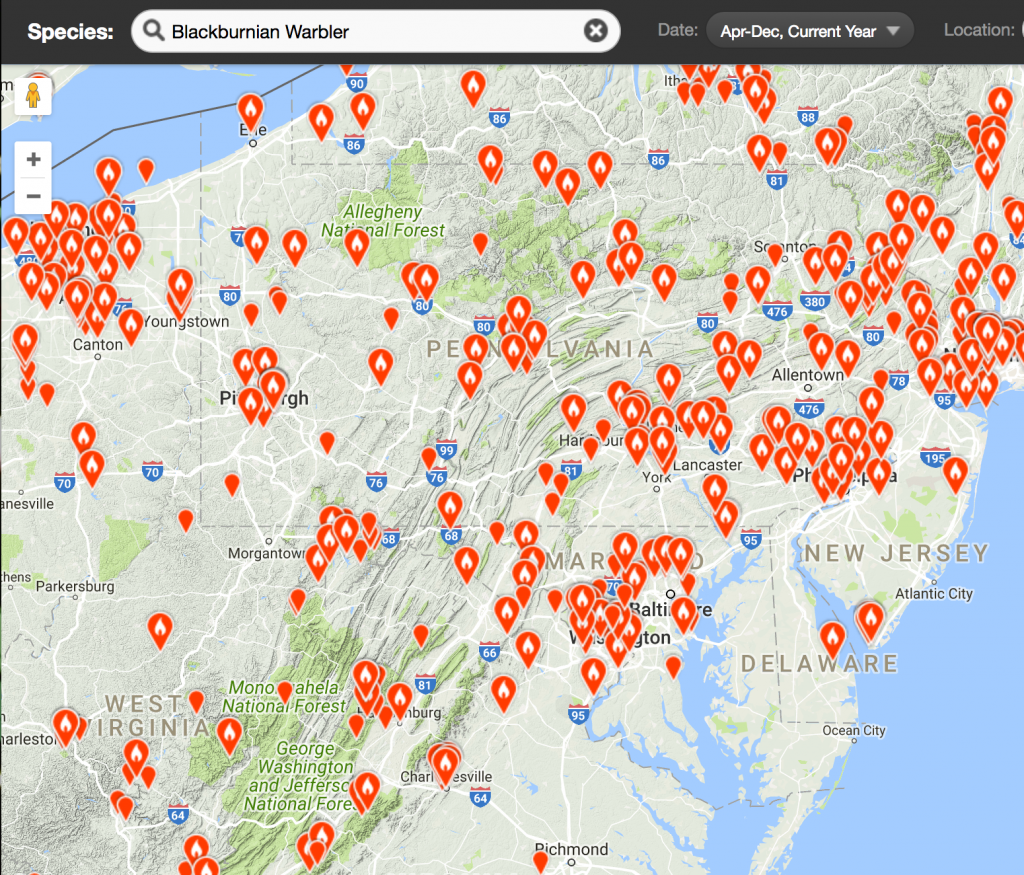
Zooming into the NJ area, we can see how Blackburnians mostly skirt around the DelMarVa peninsula and southern NJ.
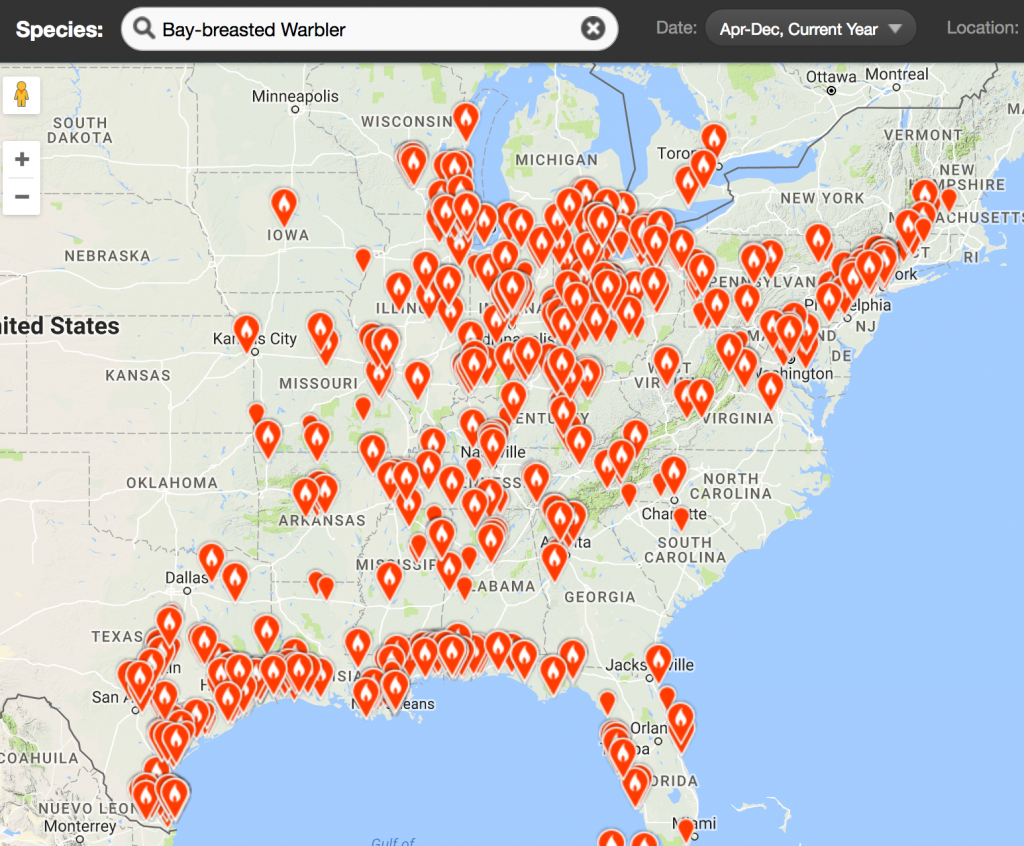
Bay-breasted Warbler sightings as of May 4. This pattern seems very similar to Blackburnian Warbler, with sightings along the entire gulf cost, few sightings along the southeastern US, and then skirting the western side of New Jersey before progressing further northeast. There are no sightings in DelMarVa or southern NJ as of this timepoint, despite being seen as far north as Massachusetts.
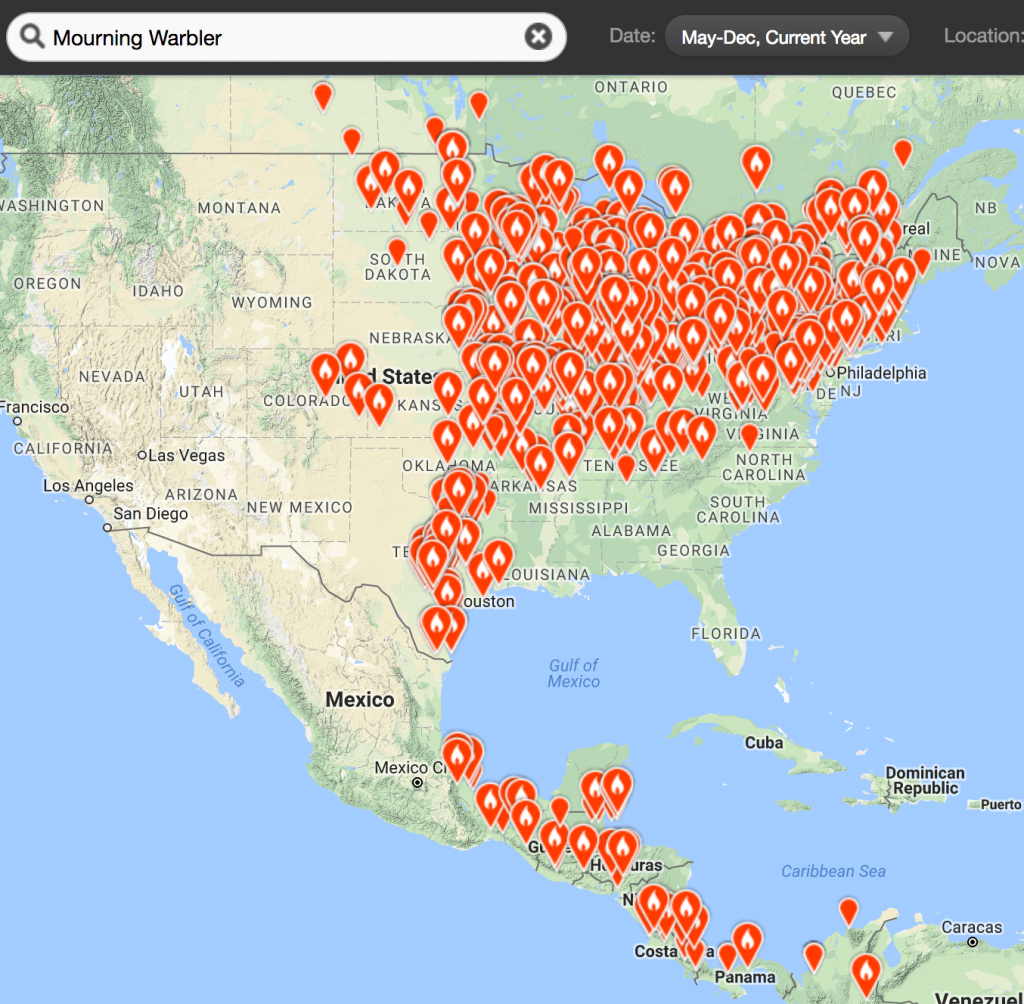
Here’s the pattern for Mourning Warbler as of May 19. This is a great example of a bird that migrates completely up through Texas (not at all through the gulf and Florida, eventually spreading northeastward towards NJ.
This pattern is not restricted to warblers, as a similar pattern is seen for Swainson’s Thrush.
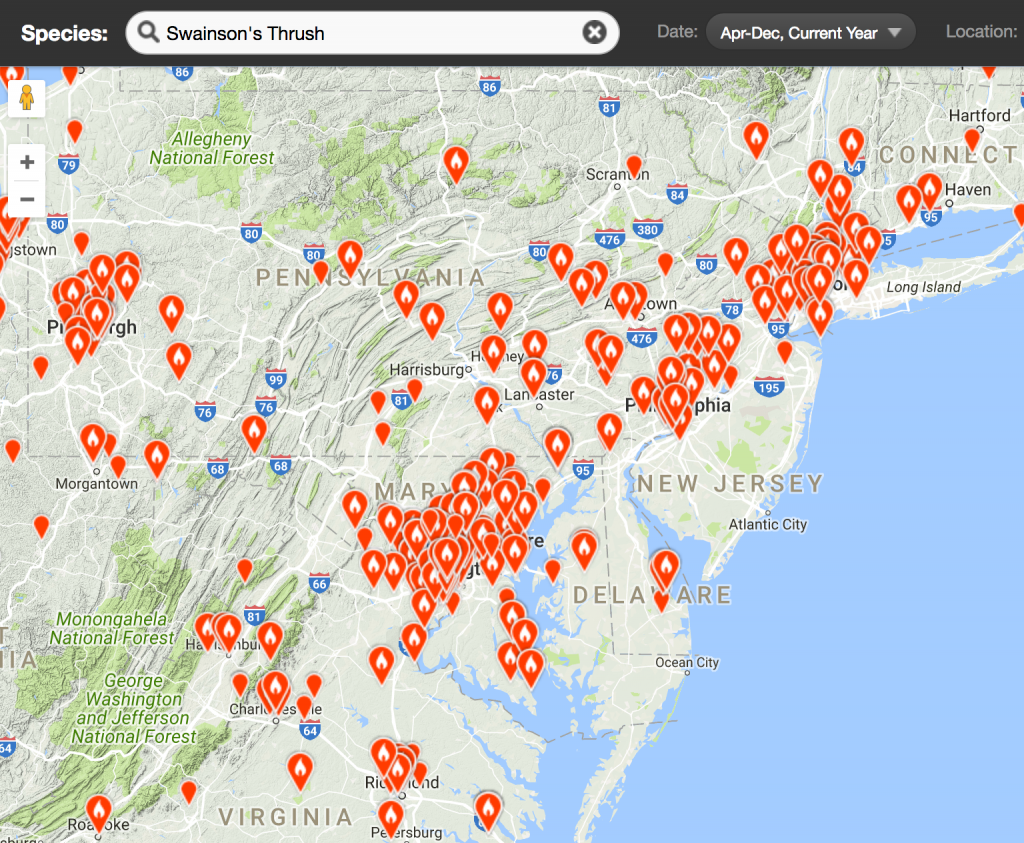
Here we can see Swainson’s Thrush migrating up the western side of New Jersey through a corridor that extends from Baltimore though NYC.
Could it be that these sighting maps are distorted due to the number of birders in the Baltimore, Philadelphia, and New York City areas, essentially creating an ‘artificial’ corridor that represents more birders rather than more birds? I think that is not the case, based on what we see for Canada Warbler sightings. Here are the sightings in the northeast, and I can easily imagine possible clusters near those three metropolitan areas.
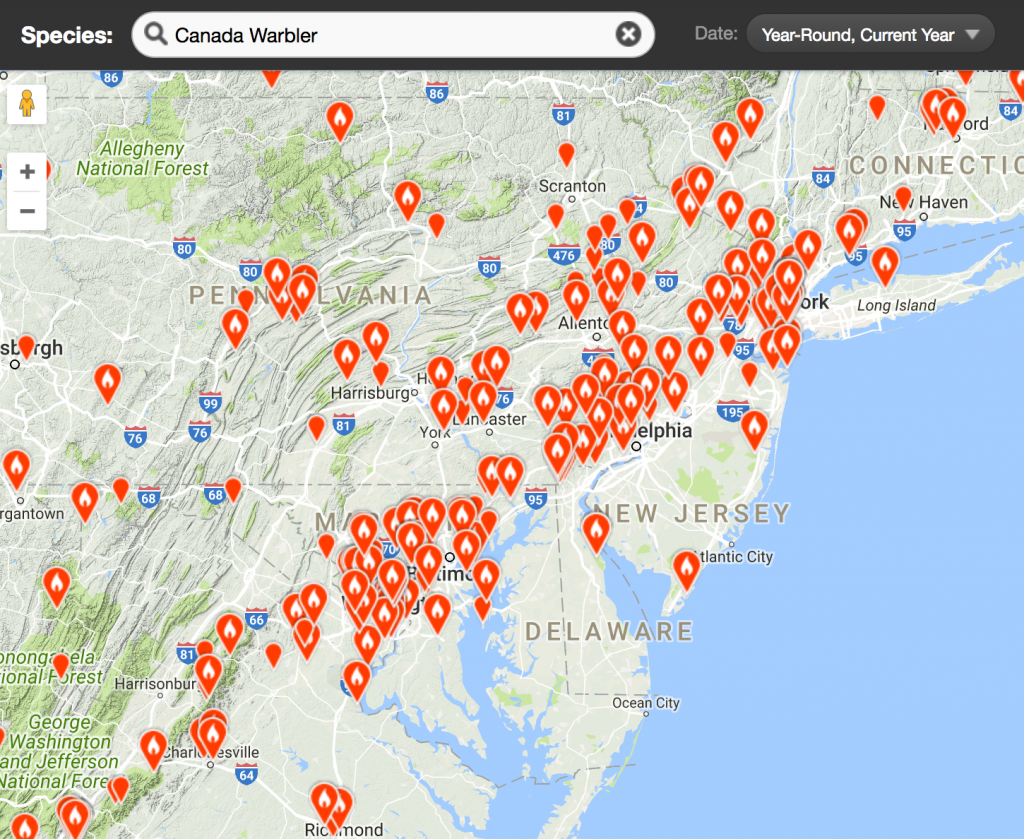
Here is the distribution of Canada Warbler sightings surrounding New Jersey, showing that the birds most often are seen west of DelMarVa and southern NJ, in a corridor extending between Baltimore and NYC.
But if we zoom out on the map, that same corridor extends southward though the Appalachians, into lesser populated areas, so it is not entirely due to a greater number of birders, at least for this species.
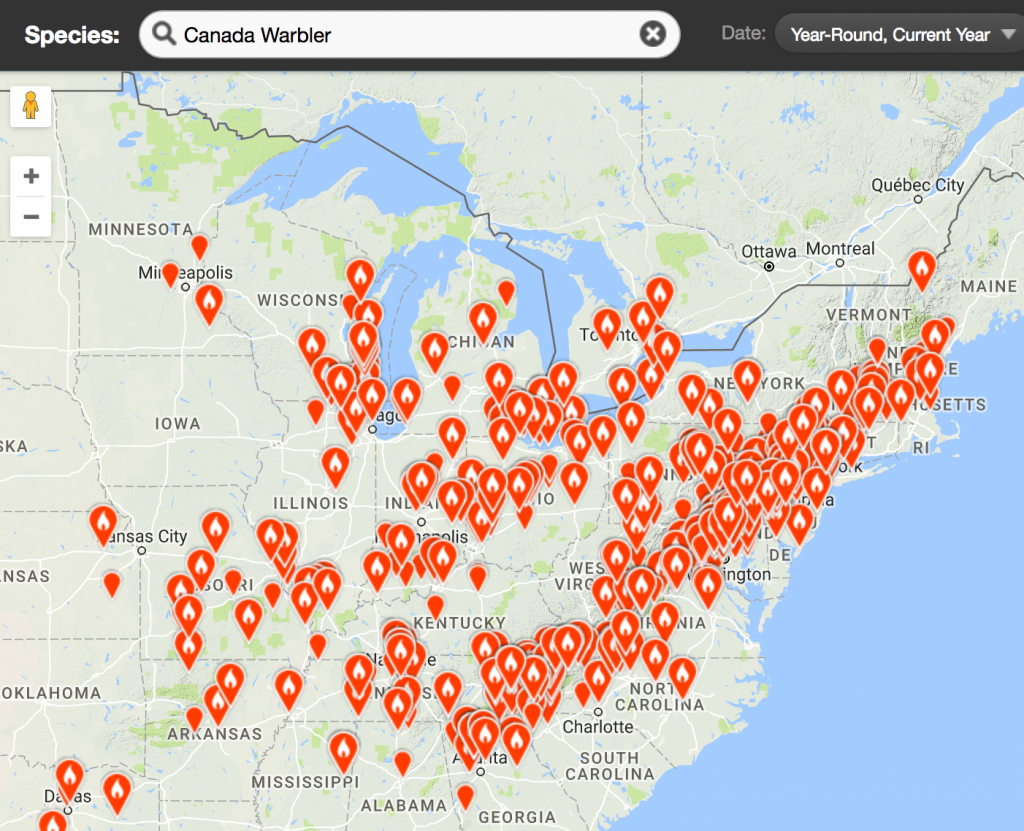
And now zooming out we see that the the distribution of Canada Warbler sightings in the northeast does reveal a kind of corridor extending through the Appalachians.
As I said previously, it remains to be seen which of these patterns is more common, and whether the use of the central flyway is sufficient to explain the rarer migrants in southern NJ. But the interesting take-home message for me is that naïvely, I would think that the better place to find northward-moving migrants in NJ during spring would be to head southward to Cape May, but instead the best overall locations appear to be in the northern part of the state. This conclusion is borne out by great spring days that I’ve had over the years at Garret Mountain, but I used to think that was a special migrant trap situation. Now I lean towards it being just one nice place for birds to rest within suburban sprawl on a migratory corridor.
I leave you with one more pattern, that of Blackpoll Warbler. I know that Blackpolls have an interesting southward fall migration, heading out to sea from the northeastern US on their way to the Caribbean, but their northward spring migration has an interesting pattern too, with sightings not just in TX and the gulf coast states, but including abundant sightings throughout Florida, up through Georgia, then bifurcating into east coast and central branches. I’ll have to read more about this species as I continue to follow spring migration through eBird.
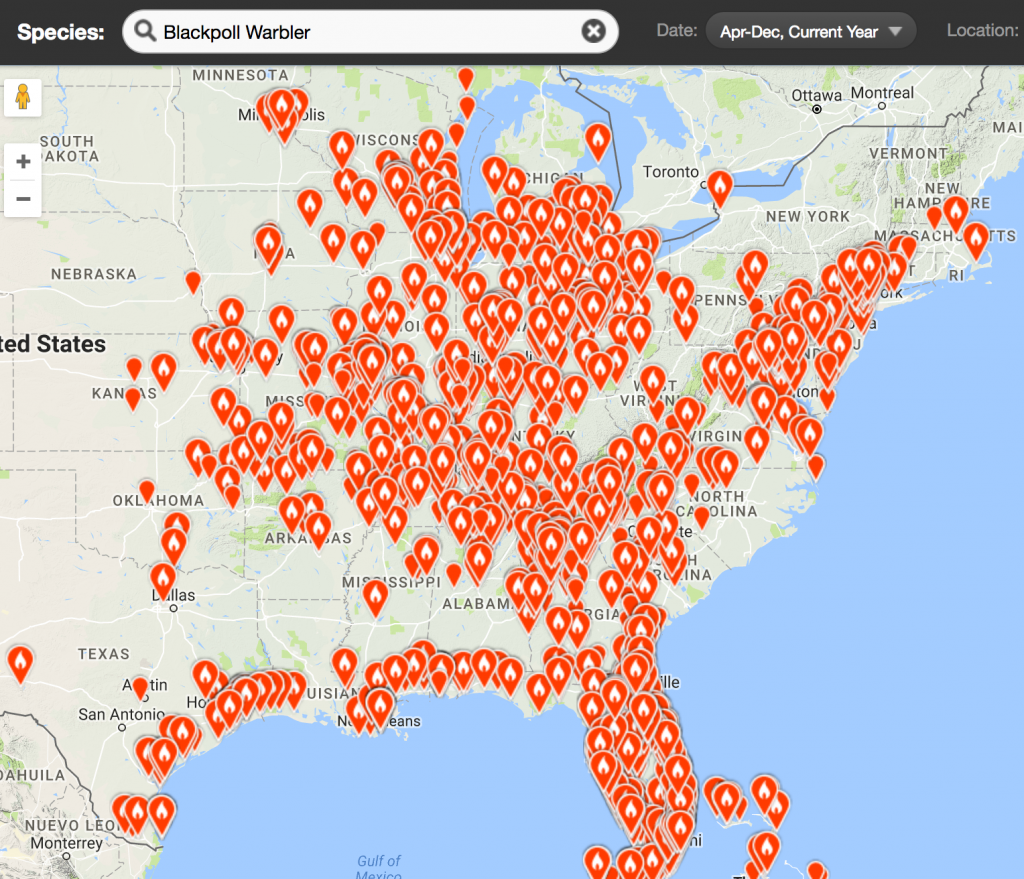 I realize that this post might not be of immediate interest to those of you who live outside of my home area of New Jersey, but I hope that it encourages you to use eBird sightings as a way to envision migration patterns in your area. On the eBird site use the “Explore” option and then “Species Maps” to search for sightings of any species of interest, setting a narrow search window of one month, zoom in to your home region, then try it again the next month, and see if any interesting patterns emerge. I have suggested to the folks at Cornell that they enable narrower or more specific searches, but I have not heard back from them yet.
I realize that this post might not be of immediate interest to those of you who live outside of my home area of New Jersey, but I hope that it encourages you to use eBird sightings as a way to envision migration patterns in your area. On the eBird site use the “Explore” option and then “Species Maps” to search for sightings of any species of interest, setting a narrow search window of one month, zoom in to your home region, then try it again the next month, and see if any interesting patterns emerge. I have suggested to the folks at Cornell that they enable narrower or more specific searches, but I have not heard back from them yet.
